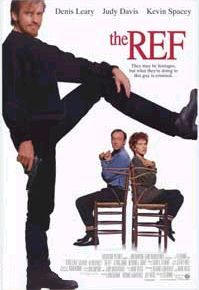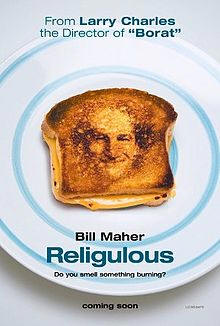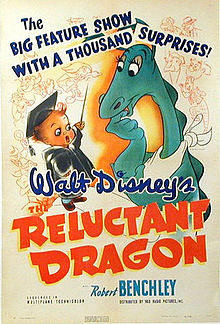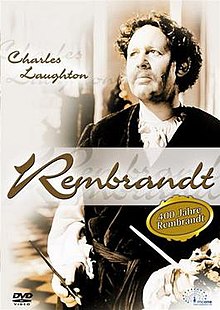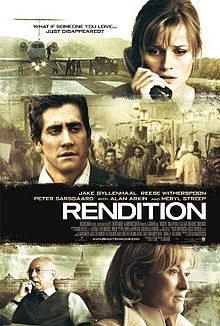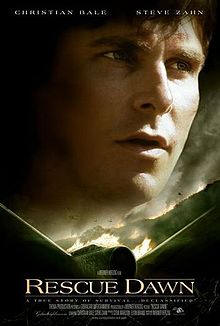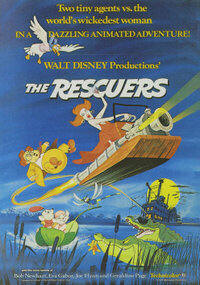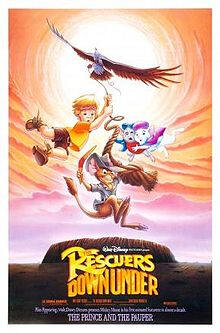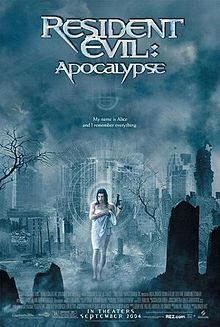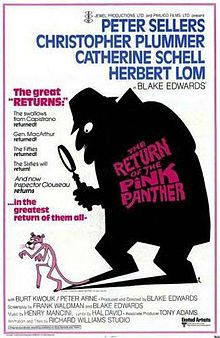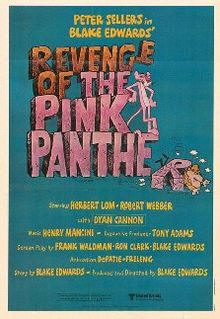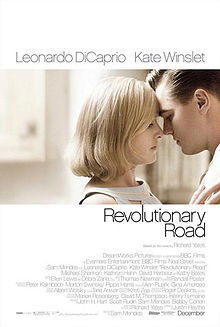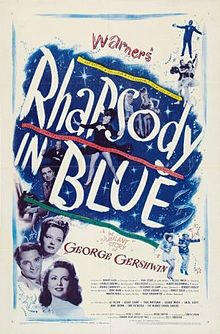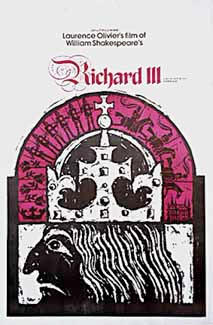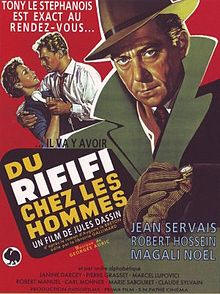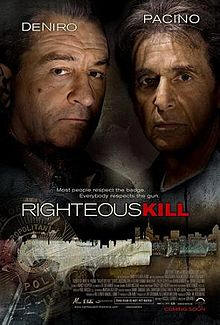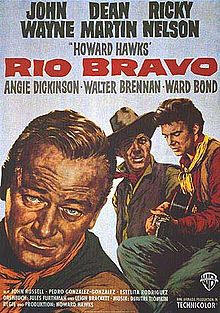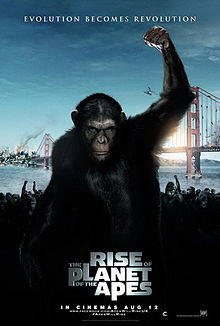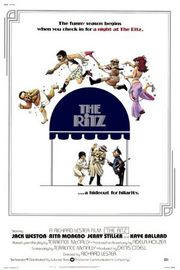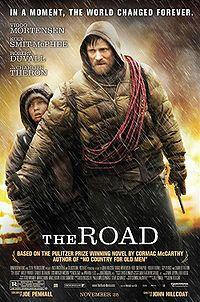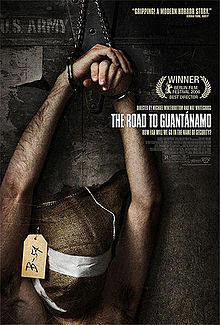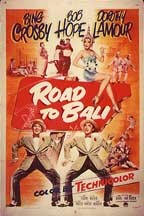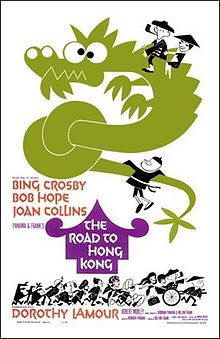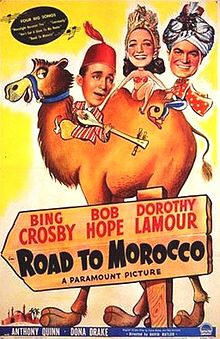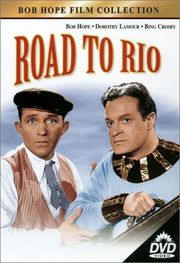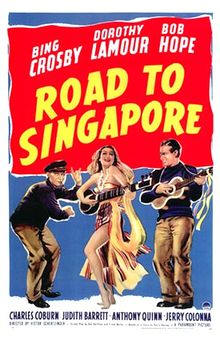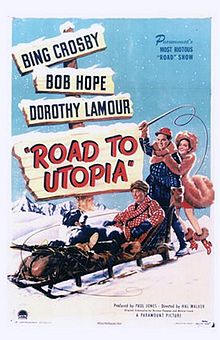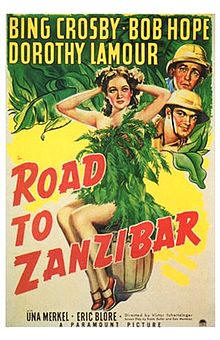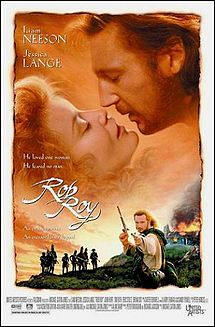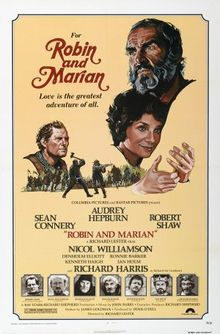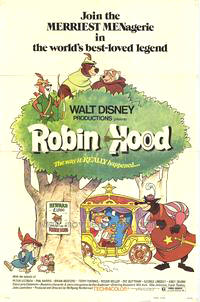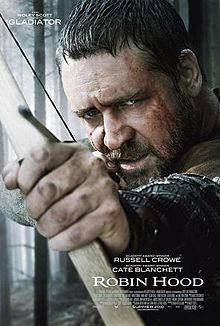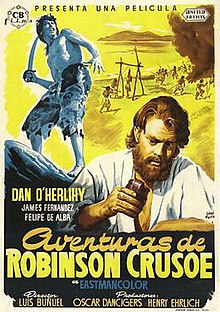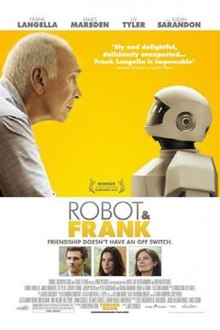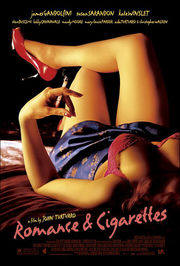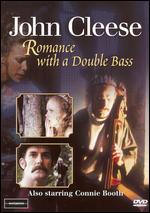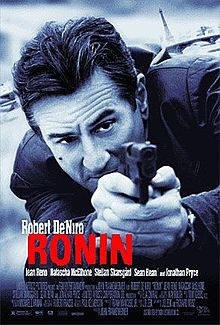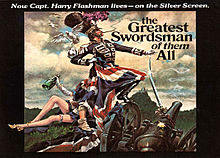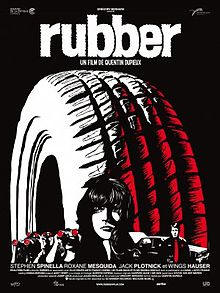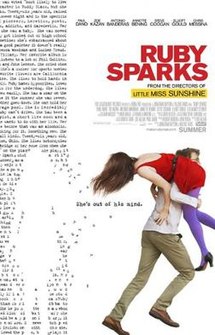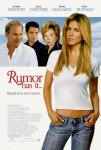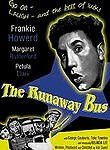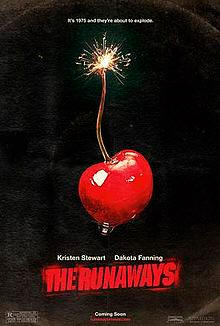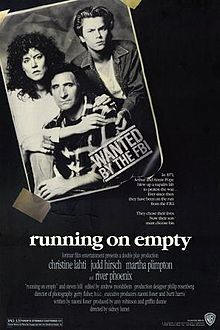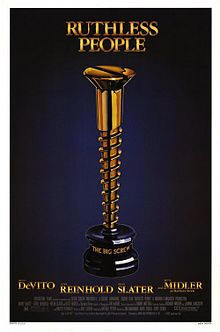|
Movies we've seen © 2004-2013 by John Varley; all rights reserved |
R
|
Rabbit-Proof Fence (Australia, 2002) A true story of three aboriginal sisters in 1931, torn from their family by the astonishingly racist policies of the Australian government that meant to completely breed the black blood out of the population. They were taken to a prison camp where they were to be trained as servants, all for their own good, and allowed to marry other quadroons and octoroons if they were pale enough, but apparently not to breed at all if they were too black. They escape and follow the rabbit-proof fence 1200 miles to their home. Two of them make it. They stay free long enough for the oldest to have two children ... and are again taken back to the camp, where they escape again, and are brought back again. At the end of the film we see the very, very old ladies who lived this incredible story. Heartbreaking and shocking, as the Australian government did not abolish these policies until 1970, and still refuses to apologize for it. IMDb.com Rachel Getting Married (2008) … but it’s not really about Rachel at all, is it? It’s about Kym, her sister. As a matter of face, everything is about Kym. No matter where she goes, no matter what else is going on, Kym will be sure to make it be about Kym. She will have some crisis, or get into an argument, or say something incredibly inappropriate, and then everyone will have to pay attention to little Kymmie. Kym is a recovering addict, you see, on a pass from the detox facility to attend her sister’s wedding. Where she discovers she is not to be the maid of honor, and then manages to insult Rachel’s best friend and browbeat Rachel until she is the maid of honor. Score one for Kymmie! Then there is the dinner with all Rachel’s friends and family gathered around, happy, toasting the bride-to-be and the groom with stories and heartfelt love … and Kym stands and talks about—what else!—herself, in great and wincing detail, pretty well putting a damper on the proceedings. Well, she could hardly let all those people have fun, when she wasn’t, could she? Am I being too hard on Kym? Possibly. As we all knew or at least suspected, there is a terrible reason for the guilt she feels, and which she seems to take as a license to make all her relatives pay for her unhappiness. It is a terrible story, indeed, (I won’t reveal it here) and she should feel guilty—I would, and I’d never get over it—and about the only nice thing I can say for her is that she does feel guilty … but even that guilt seems to be something she can use as a weapon against her family. The decent thing, if she had any self-knowledge at all, would have been to take a pass on the wedding. Call in sick. Send flowers. They would have missed her, but they would have gotten over it. She was far, far from ready (if she will ever be) to face a stressful situation like that. And I think she should have known it. Or maybe she did know it, and just didn’t care. And the funny thing is, I think part of her problem is this “making amends” business that is part of all 12-step programs. Perhaps there are people who can do this with grace, and actually merit the forgiveness they seek for the unspeakable atrocities they committed while drunk or high. But I think that, once again, making amends is about me, much more than it’s about anything I’ve done to you. Addicts are very self-involved people, very narcissistic. And, more often than not, if you aren’t interested in letting them make amends to you, if you say to them: “Good for you. Glad you’re sober. But there is no way I can forgive the things you did and blamed on alcohol and drugs. So screw your amends. Take a hike and I pray that I never see you again …” … well, look out. They will find a way to force amends on you. Gee, it sounds like I hated the movie, doesn’t it? Nothing could be further from the truth. It’s a great little movie, wonderfully written and with absolutely wonderful performances from all involved, most of all Anne Hathaway, playing very much against type and being more than up to it. It’s the first screenwriting credit for Jenny Lumet, daughter of Sidney Lumet, and it’s directed by Jonathan Demme, one of those directors who can’t be categorized, you can’t say there’s any such thing as a Jonathan Demme film. I mean what do The Silence of the Lambs, Philadelphia, and Neil Young: Heart of Gold have in common? The extended family Jenny Lumet conjures here is pretty amazing, perhaps not too surprising for a woman who is the granddaughter of Lena Horne, her entire family seemingly in the arts. The fictional family here is so diverse that it’s funny, at first. These people know a lot of artists and musicians, and they all have something to contribute either visually or musically. (I’m happy to note just how much progress has been made since I was young. This is an interracial wedding … and absolutely nothing is made of race. There is never an awkward moment of white guilt or of black anger. Not long after I graduated, Guess Who’s Coming to Dinner was a very, very big deal. I believe some theaters in the South wouldn’t show it.) Demme doesn’t poke fun as the decidedly non-traditional wedding unfolds, with a nod to just about every culture on the planet, and the groom singing a Neil Young song with a Harley-Davidson in it instead of vowing to love, honor, and cherish. And pretty soon I got into the spirit of it all, while I waited for Kym to throw a dead skunk into the tent. Side note: Isn’t it depressing to see actors younger than you are … getting old? I was having a little trouble accepting Debra Winger as the divorced mother of these girls, until we got a few close-ups of the wrinkles on her face and the first hint of a turkey neck. She’s 53 now. No longer the ingénue, though she still looks great. Congrats for not getting the face-lift … not yet, anyway. IMDb.com Radio (2003) Wants a little too much to be liked. Inspirational movies about mentally challenged people are tough to pull off, and this one fell short. IMDb.com Raiders of the Lost Ark (1981) Hurray! There’s going to be a new Indiana Jones movie, Indiana Jones and the Kingdom of the Crystal Skull. It opens on May 22nd. We might not be there that day, but certainly that week! We both loved the originals, so much that we decided it had been too long since we’d seen them. So we’re watching all three before the new one comes out. As action-adventure movies they were known for their outrageous stunt work. Do they hold up in this age when digital wire removal is a separate SFX job, enabling people to fly through the air like kung fu maniacs full of helium? Could they still impress in the CGI green-screen era, when endless complex vistas can be constructed without a carpenter ever hammering a nail? Yes! They do! And beyond that, they put most action movies of today in the shadow of their vast capacity to entertain. You may not remember, or you may not be old enough to remember, just how hard this first movie hit us all when it first opened. It was as revolutionary as Star Wars, and in some respects even better. It was a return to the days of simple-minded Saturday matinee fistfights, villains, and narrow escapes, only done with modern technology (at the time) and huge amounts of wit and grace, without ever disrespecting its humble origins. You know the plot, and you probably know the major scenes, so I won’t bother with all that. Seeing it now, it is amazing how much more visceral a stunt is if you know it’s being done by some maniac who really does have his fragile hide hanging out there, rather than the stunts of today which look impossible because they are impossible. That unsung guy subbing for Harrison Ford really did get himself dragged under that truck! And the set pieces, like the fight around the flying wing, where one thing piles on another and then another and then another … sheer genius. IMDb.com Raising Arizona (1987) Reviewed in Coen Brothers. IMDb.com Raising Victor Vargas (France, 2002) A good story of love and romance and growing up in Latino New York. All the actors are first-time non-professionals, but several have already been cast in upcoming movies. Judy Marte is especially good, and so is Victor Rasuk. IMDb.com Rampart (2011) This is one of those movies you’re probably not going to love, but can easily admire. The script by James Ellroy and the director, Oren Moverman, concerns a bad cop, Dave “Date Rape” Brown, brilliantly played by Woody Harrelson, who has been busting heads and, now and then, shooting people for a long time, and now it’s all coming home to roost after he is videotaped whaling on a black guy who ran into his car and then tried to run away. He seems to literally believe that he’s done nothing wrong. He says at one point that he never hurt a good guy … and there’s a grain of truth in that. The guys he has tuned up are invariably scumbags, and the ones he killed probably had it coming. Remember, before Rodney King became a folk hero he was a life-long scumbag. He led police on a long chase at up to 90 mph because he was drunk and in violation of his parole on a robbery conviction. He did resist arrest, and he did lunge at police officers. And if they had only done what was in the book, what they had been trained to do, which was swarm him with five officers, pin him to the ground, cuff him, and toss his sorry ass into the back of a cruiser, no one would know his name now and many deaths and much destruction could have been avoided. (And he never would have had about $4 million to blow through in a few years and end up broke and without skills, as he is now.) But that’s Woody’s problem, he can’t see that “by the book” is the only way to play it. He’s definitely a bad man, but it is sad to see his disintegration, and that is the strength of Woody’s characterization. The story takes place during the Rampart scandal, when the LAPD was under fire from all directions. (BTW: Joseph Wambaugh points out that, after all the storm and fury, only two officers were every proven to be dirty). We see how the politics of the time worked both for him and against him. It’s a good story, well-told, and with excellent supporting work from Robin Wright, Ned Beatty, Sigourney Weaver, Steve Buscemi, Ann Heche, and Ice Cube. (And again BTW: Isn’t it about time some of these actor/ex-rappers got rid of their stupid rap names? His real name is O’Shea Jackson. That’s a great name!) IMDb.com Random Harvest (1942) James Hilton is best known for writing the books Lost Horizon and Goodbye. Mr. Chips. This wildly unlikely story doesn’t measure up to those, but the acting of Ronald Colman and, even better, Greer Garson, almost make it believable. I mean, here’s a man who loses his memory not once, but twice. Amnesia is a beloved story device to novelists and screenwriters, and it’s always a type that leaves the sufferer basically unmarked. Here, a man suffers from shell shock in 1917, meets a kind woman, then is hit by a taxi in 1920 and loses those three years, but recovers his prior memories. Sixteen years later … oh, it’s utterly preposterous, and I frequently wanted to wallop him upside the head. Well, it worked twice before, didn’t it? A dozen times he comes within an inch of jogging it all back, but the opportunity is missed. At some point during those years the wife finds him and goes to work for him as his secretary. (He’s very rich, a titan of industry, and eventually an MP. I mean, this guy has it all … except happiness.) Naturally, she doesn’t tell him, since he wouldn’t remember her. She wants his love for her to be something he remembers. Oh, does she ever suffer! In the end it all works out, of course … but the thing is, in the book, the reader doesn’t know the secretary is really his wife until the last line of the novel! That must have been quite a trick, and I almost would like to read the book to see how he pulled it off. (Maybe I’d be content just to read the last line.) Naturally, this device couldn’t be used in the movie without a radical make-up job as in Sleuth. Interesting footnote: Greer Garson might very well have had an Oscar nomination for this part, but in the very same year she made Mrs. Miniver, a much better movie. She was nominated for that, and won. IMDb.com Rango (2011) Here’s one of the better CGI animated movies of recent years. Johnny Depp is a chameleon who was raised alone in a terrarium, and he has a rich fantasy life. When he is accidentally released in the desert, he finds his way to the little town of Dirt, where his posturing and lying convince the townsfolk to appoint him Sheriff. It’s all an homage to any number of old westerns—near the end the “Spirit of the West” appears, and he’s Clint Eastwood as the Man With No Name … driving a golf cart! It’s a lot of fun, and doesn’t indulge in the once-every-five-minutes chase sequences we are so used to and (for myself) bored by. And it is surprisingly beautiful, artful, in its textures and camera angles, once more having fun with the styles of directors as different as John Ford and Sergio Leone. Really liked it. IMDb.com Ransom (1996) Mel Gibson gets the shit kicked out of him in spite of being a millionaire. IMDb.com Ransom! (1956) Glenn Ford and Donna Reed in a pretty good kidnap drama. It was based on a “United States Steel Hour” episode called “Fearful Decision,” which was a rarity at the time, making a movie from a TV show. It was re-made in 1996 with Mel Gibson, directed by Ron Howard. Naturally, since this first version is entirely psychological with no more violence in it than Donna Reed picking up a fireplace iron and threatening to belt a woman who won’t shut up and get out of her house, Gibson and Howard had to spice it up with truckloads of killing and a lot of stuff about the huge gang that does the kidnapping. In the original, we never see the kidnappers. The only thing the two films have in common is the decision by the father to use the ransom money to put a price on the head of the kidnappers, rather than pay it to them. Glenn Ford is informed by the police that in kidnap cases, your chances are two to one that you will get your child back … whether or not you pay the ransom. The kid may already be dead, or the cops may find the bad guys before the ransom is paid. I’d want a hard look at those numbers, but if they are true, it is an interesting decision to make. If the kid is still alive, then you know something about the bad guys, which is that they are not stone killers. If he’s dead, what difference does it make if you pay, except that you’ll be rewarding evil. Ford’s logic is that a $500,000 bounty on your head, dead or alive, is plenty of incentive for the kidnappers to turn on one another. You won’t even be able to trust your family, and the whole freakin’ world will be looking for you. You will be caught, and/or betrayed. And he also says, on live TV, that if his kid is dead, the whole half a mill will be devoted to the single-minded pursuit of your sorry ass, for as long as it takes, world without end, amen. If I was a kidnapper, I’d sure as hell think it over. But if I was a father I doubt I could follow that risky logic. Few people could, but it’s an interesting proposition. IMDb.com Rare Exports: A Christmas Tale (Finland, 2010) Here’s one of the stranger little movies you’ll ever see. It is set in rural Finland and most of it is in the Finnish language. It seems a group of Americans has determined that what everyone thought was a mountain is actually the world’s biggest tomb/prison, dwarfing the pyramids. Prison, because what’s under it is not completely dead, just frozen. And what’s under it? Why … Santa Claus. But not jolly old Saint Nick. This is the old, Nordic, primitive Santa, who is a lot more interested in who’s been naughty than in giving presents to those who have been nice. And his punishments are grim, often fatal, as we see in ancient illustrations dug up by a local six-year-old named Pietari. I have no idea if any of these pictures are real, or if the legends we hear are real, but you just accept it as the premise and move on with the story. A reindeer herd is slaughtered, children vanish, hair dryers are stolen … hair dryers? Radiators, too. Turns out Santa’s elves (about 200 naked old men out in the snow) are trying to thaw Santa, who is bigger than a Macy’s parade float, out of his giant block of ice. It’s mostly handled pretty well, though I thought it got a little overblown as it neared the end. The build-up was better. But then it redeemed itself with a hilarious postscript. IMDb.com Ratatouille (2007) Here is a movie that is exactly what I’ve come to expect from Pixar … and that’s a good thing. I wonder if ever, in the history of motion pictures, a studio has had a string of hits like this:
That is 4.270 billion dollars, friends and neighbors. Pixar can do no wrong. They plan to release something called WALL-E, about a lonely robot—basically a silent film, if you can believe that—in the summer of 2008. In 2009 there will be something called Up, concerning an old man, which flies in the face of all conventional wisdom about animated films. After that, Toy Story 3, and … wait for it … John Carter of Mars, an animated/live action film that has a built-in audience of billions, and has been under development of one sort of another since 1931(!!!) with such names as Robert Clampett, Ray Harryhausen, John McTiernan, Tom Cruise, Robert Rodriguez, Frank Frazetta, and Kerry Conran attached at one time or another. I’m not an ERB fan, but if Disney/Pixar, John Lasseter, Brad Bird and/or Andrew Stanton make it, I will go, enthusiastically. So what is the secret of Pixar’s success? Several things, I believe, but here are the three most important ones: Story, story, and story! At any other studio in the business, if a film grosses $100,000,000 the following phone call is made from the studio chief to the grunts who get the work done: “Hacks in Hollywood just earned a hundred big ones. Work starts on Hacks in Hollywood 2 this afternoon. Oh, and round up a couple of writers. We’ll need a story, or something, I guess. And get me Bruce Willis’s agent.” John Lasseter, the creative head of Pixar (and now Disney, too) has this to say about sequels: “If we have a great story, we'll do a sequel.” Story first, always. And he admits it’s a formula, but it’s a formula that isn’t likely to ever feel stale, as it’s the basic coming-of-age story: “With the help of friends or family, a character ventures out into the real world and learns to appreciate his friends and family. At the core, it's gotta be about the growth of the main character, and how he changes.” Works for me. Worked for Nemo, and Woody, and Lightning McQueen, and now it’s worked for Remy the Rat. I’d bet good money it will work for WALL-E, too. IMDb.com Ray (2004) It’s a formula biopic, okay? There are absolutely no surprises, and even though it’s all pretty much real, Ray Charles’ life was a success cliché: came from nowhere, struggled against his handicap with the help of a mother who wouldn’t let him be a cripple, has this musical genius, finds his sound, breaks out, turns on his early friends at Atlantic, makes a public moral stand, is almost brought down by heroin and womanizing, triumphs in the end. But it’s glorious. I was totally convinced by Jamie Foxx. And how can you not like a movie with all that wonderful music? Oh, and parts of it consist of montages that both reflect and improve on that old device we don’t see much of anymore. Very well done. IMDb.com The Reader (2008) Michael is 15, Hanna (Kate Winslet in her Oscar-winning role) is 30-something. It’s Germany in 1958, and they’re having a torrid affair. But she wants him to read to her before they have sex. Then she leaves him. Years later (I think about 1965, but the movie jumps around a lot and can get confusing) he is in law school and learns she is on trial with five other women as an SS concentration camp guard. She, and the others, did things like select prisoners to be sent on to Auschwitz, but that’s only the least of it. After all, if she didn’t select them, somebody else would. But while marching 300 women to a new camp, the guards locked them in a church which was later set afire by Allied bombing. And they didn’t let them out. All died but a mother and her daughter, and now they have written a book about it, which has resulted in this trial. The other five deny responsibility, but Hanna admits it all. She got into the guard business because she needed a job, she says. She is painfully honest about it. And when it comes time to determine the authorship of a damning memo, she assumes responsibility, though it could not have been her, because she has a secret she is ashamed to reveal … … I don’t think I’ll issue a spoiler alert (though you may take this demurral as an alert, if you choose), because I think the nature of her secret is pretty obvious. She’s illiterate. She can’t read or write. But she doesn’t deny the testimony of the other Nazi bitches, and thus ends up with a life sentence, while the other five get four years. This is a very difficult movie. For one thing, your mind may boggle at the idea that she would admit to watching 300 women burn to death—her rationale being that if they had released them, the prisoners would have escaped—and yet won’t admit the one thing that would save her and expose the other five as the lying whores that they are. And yet I bought it, in the end. The human mind is not logical, and the shame of illiteracy in an educated society like Germany is intense. But it’s ironic that she would admit to all her sins as a guard but lie about that. The question of lingering German guilt is a complex one, to me. Should the war criminals have been punished? No question, especially the SS. But as someone points out, over eight thousand people worked at Auschwitz. How many do you think got punished? Only a handful, and often for reasons like that shown here: They happened to have been exposed by a best-selling book, and their trial was more a matter of public relations than any quest for justice. Sheer bad luck. I also couldn’t help looking at the panel of elderly judges and wondering, What did you do in the war, daddy? Do you have the right to sit in judgement of these women? One can even make a damn good case against the “ordinary German” who lived next door to the camps and somehow never noticed the odor of burning flesh or the fact that people went in, but no one ever came out. “Ve didn’t know vat vas happening!” What’s the German word for bullshit? It’s easy to condemn them, and they should be condemned … but what do you think you would have done in the war, daddy-o? If you had been a German? Don’t be too quick to answer if you’ve never been tested. I haven’t been tested, and all I can say is that I hope, I deeply hope, that I would stand up, that I wouldn’t go along. But I’m far from sure that I would. It is so easy to go along, to close your eyes …even when not much is at stake, for you. How much harder if you know that standing up will get you a prison sentence, and maybe a firing squad? Like I say, I’m far from sure … This movie has been criticized for going easy on Hanna, for showing her to be a sort of “stand-up” gal. There’s some truth in that. I mean, she’s played by Kate Winslet, for crying out loud! It’s not easy to hate her … and I don’t, and I don’t think I would even if she were played by an actress with a harder edge. Some also objected that we only hear the horror stories, we never see the camps, we never see the burning church. I reject that notion. Come on, we’ve seen the camps, we’ve seen all manner of Nazi atrocities, and while I’m not saying we shouldn’t see more—never forget!—this movie was about the law, about justice. Judgement at Nuremberg did the same thing, and I don’t think there were too many objections. But what does this movie say, in the end, about justice, and about forgiveness? Michael as an older man (now played by Ralph Fiennes) goes to see one of the women who escaped the burning church to tell her Hanna is dead, and to deliver some money that Hanna may or may not have seen as some degree of expiation. The woman—played wonderfully by Lena Olin—utterly rejects it. There can be no expiation, there can be no forgiveness. I agree. Some say that John Demjanjuk, who is now 89, is being somehow hounded. My only concern is if he is who they say he is (and I think he is, the evidence seem pretty damning). If he is, then I don’t care if he’s 189. Try him. Lock his Nazi ass up for whatever pitiful years he has left. Final word: I suspect this movie has more nudity in it than any other I’ve seen this side of porn. Hanna and the boy spend most of their time together naked, and making love, and it’s fairly explicit. But I never felt the sex was being exploited in any way. Actually, it was treated in a fairly offhand manner, which is a good thing, I believe. Odd bit of trivia: David Kross, who plays the young Michael, was only 17 when he was cast. They filmed all his non-nude scenes, and had to wait until he turned 18 before they could do the other ones! IMDb.com Real Women Have Curves (2002) Could be a good double feature with Raising Victor Vargas. A "traditionally built" (as Mma Precious Ramotswe from The No. 1 Ladies’ Detective Agency books would put it) Latino teen in Los Angeles wants to go to college but is being pressured by her overweight mother to (1) lose weight, and (2) go to work in the family dress factory, where they are paid $18 to make dresses that will sell for $600 and are in constant danger of going bankrupt. Guess which thing she does? But it’s good. And the main character, played by America Ferrara, will soon be co-starring in a movie with Victor Rasuk. If you’re young and Hispanic, it would seem your roles are a bit limited. IMDb.com Rear Window (1954) See Top 25 Favorite Movies. IMDb.com Rebel Without a Cause (1955) I know it's heresy, I know this was an incredibly influential movie, but, frankly, I thought it was pretty bad. I've never been a James Dean fan, I thought he was a haircut in search of a personality. His character here, Jim Stark, is a big crybaby. He don't get enough love and understanding from his parents for his totally inexplicable angst and alienation, which he mumbles inarticulately about when they ask him to share his agony. Boo-hoo. And he has contempt for his father because of his perception that the old man won't stand up to his mother. What is Dad's great sin? Helping out around the house when Mom is sick, apparently. (Jim Backus wears a cute little pinafore in this scene to emphasize his emasculation. Ludicrous.) Sal Mineo is fucked up beyond belief, from shooting puppies (I'm not kidding) to wanting Jim to be his lover and his father, somehow. He lives with his black mammy. I wouldn't want to be in the same county with him. Natalie Wood is one of those girls who gets her kicks when boys fight over her, or do incredibly stupid things to impress her. Her boyfriend drives off a cliff in a "chickie run," and a few hours later she's hooked up with Jim, smiling and laughing. I hated all these people. It's very slow, and I didn't buy into a single scene or idea in it, from the fatherly cop in the first scene to the miraculous arrival of the mammy—okay, she was a maid, but you get the reference—at the Griffith Park Observatory in the last scene, when her dear boy is in trouble. What, she happened to be driving by, miles from anywhere? What is that? Telepathy? Nobody looks convincing. Yeah, I know, you have to make allowances, people dressed differently in that era ... but all these kids are so clean-cut it's impossible to believe them having a knife fight. Did the girls really wear petticoats to a chickie run? Maybe so, but most of them look too old to be high school students. Natalie Wood was actually 17 at the time, and Sal Mineo was 16, but James Dean was 24. That's a lot of holding back. Maybe he'd have graduated when he was 37, if he'd lived. Then there was Dennis Hopper, who seemed to have a minor role in everything around this time, and he has almost no lines but looks too old, even though he's 19. There was really nothing here for me to like. Oh, I take it back. Lee said she liked the colors, and I had to agree. But I could have seen that in a series of stills. And it occurred to me that, if this had been in black and white, I might have tolerated it more easily. Melodrama plays better in B&W, for some reason, overacting isn't so glaring. And it was fun to see the observatory 50 years ago, having seen the newly renovated place just the day before ... which is the only reason we rented this turkey in the first place. Trivial grumble: When Plato (Mineo) has gone berserk, shooting at people, and the cops have the observatory surrounded and Jim goes in to get him, Jim persuades Plato to give him the gun, promising to give it right back. He sneakily removes the ammo clip and hands it back. He does this quickly and easily, showing a familiarity with handguns. (It's something that would have taken me a while to figure out, as I've never done it before.) But even gun-ignorant me knows that with an automatic, if you've fired it, there's still a round in the chamber. Okay, it's a small point, but still. IMDb.com The Reckoning (2003) A touring troupe of actors in 1380 come to a village where a deaf-mute woman is about to be hanged for murder. They begin to suspect she is innocent. The movie is well done, and reminds one a little of Hamlet (“The play’s the thing, wherein I’ll catch the conscience of the king!”), and a little like Agatha Christie where Poirot gets everybody together to explain the murder, and something like CSI: The Dark Ages. People are always saying things like “Aha! Rigor mortis has not yet set in!” and “Bite marks on the body!” and “A swelling under his arm! The plague! The plague!” Not that this is bad, but I kept expecting David Caruso to show up and start spraying everything with luminol. It got a little operatic at the end, but overall we enjoyed it. IMDb.com RED (2011) Sometimes an action movie can be completely ridiculous and I can still have a lot of fun. This is one of them. It alternates between over-the-top but fun action scenes and comic releases of tension. Most of the humor comes from Mary Louise Parker, who is very good as a government worker Bruce Willis has been talking to simply because he is terminally lonely, and ends up fleeing for her life with him and his motley crew of ex-CIA killers. The conversations are funny. He has been tearing up his social security checks just to he can talk to her. Then the shit hits the fan. RED stands for Retired, Extremely Dangerous, so we get Bruce and Morgan Freeman (who is dying of cancer in an old folks home) and John Malkovich and Helen Mirren against the whole CIA, proving they still have what it takes. The stand-out, of course, is Mirren, simply because this is not the sort of role you associate her with. She’s a cool British lady who looks good in an evening gown firing a Browning M2HB .50cal machine gun. (How do I know that? I don’t know crap about guns, but there are people who love them, and they’ve put up this useful website: imfdb.com. And BTW, as I suspected, this weapon would fire right through the vehicles she’s shooting at, through the people hiding behind them, and possible through the concrete behind them. But it’s a striking scene, and who the hell needs accuracy in a piece of fluff like this?) IMDb.com Red Dragon (2002) A remake of Manhunter with the part of Lector brought up front to capitalize on Anthony Hopkins’ Oscar win. In spite of that, it’s not bad. IMDb.com Red Eye (2005) So Rachel McAdams can play the charming ingenue in the Wedding Crashers. In this one she gets her teeth into something completely different, and much more to my taste: a take-no-prisoners, no-nonsense businesswoman. She manages a swanky hotel in Miami and finds herself on a night flight from Dallas, heading home, sitting beside a man who says her father will be killed if she doesn’t make a phone call and switch the Secretary of Homeland Security from the 38th floor to the penthouse on the roof. Obviously it’s an assassination attempt. (By the way ... is this the kind of accommodations we rent for our “public servants” with our tax money? Sadly, I’m pretty sure it is. Far as I’m concerned, they can stay at Motel 6, like we do.) People in movies usually do a string a dumb things. She doesn’t. She struggles with her situation, is foiled in several attempts, and then does almost everything right. She thinks on her feet (literally; as soon as she can, she ditches her useless high-heeled shoes so she can run!), never hesitates to become the aggressor when she can, and understands one of The Rules (I’m making a list of survival rules, which I may post here some day) that few people in movies seem to grasp: A car is a deadly weapon. She thinks! She acts! She uses what is at hand to great effect. She only makes two mistakes, which are minor. One: when you’ve just killed a man with a gun ... take the gun! Two: Never point a gun at a desperate man and tell him to freeze. Point, shoot, and keep shooting until the gun is empty. Other than that, I had no complaints at all about how she handles things. Do you know how incredibly rare that is in a thriller movie? The last one I can recall that came close was Cellular. See this one. IMDb.com Red Road (2006) Sort of a combination of Rear Window, Vertigo, and Lars von Trier. The first one for the voyeurism, the second for the obsession, and Lars for the bullshit. The writer/director, Andrea Arnold, won a Best Live Action Short Oscar for “Wasp.” This is her first feature film, and it won the Jury Prize at Cannes. She is loosely associated with the Dogme 95 movement co-founded by the most over-rated director working in films today, Lars von Trier. I have ranted against Dogme elsewhere, but briefly: They expounded 10 rules, a “Vow of Chastity” for a Dogme film, at least 8 of which are sheer bullshit insanity. The object was to encourage low-budget, personal films, to somehow give “freedom” to the filmmaker, but I can hardly imagine a more limiting straitjacket. At least 90% of the Vow of Chastity has been abandoned by everyone, including Lars. (see—or better yet, get somebody to describe—the terrible, terrible von Trier film Dogville if you don’t believe me. It violates all 10 rules.) So I’m happy to say that the Dogme connection with this little gem of a movie is tenuous to nonexistent. The idea was for three directors to make three films, using the same characters. It appears that the second and third were never made. Don’t know why. But it doesn’t matter at all; I only brought it up so I could take one more swipe at the stupid, talentless little Danish twerp. (See The 5 Obstructions. Really, it’s very good, and exposes von Trier as the control freak that he is, and a borderline fascist.) The story here is about Jackie, who monitors surveillance cameras trained on the streets of Glasgow. (Big Brother has arrived with a vengeance in the UK, in case you didn’t know. In the big cities now there is literally no public place where you are not observed by a CCTV camera.) It is a voyeur’s dream, with 35 screens to look at, pan, scan, and zoom in close enough to count somebody’s nose hairs. No one can escape her. She notices someone she knows, and not in a good way. She begins to follow him … and I have to stop being too specific here, because the allure of the movie is trying to figure out what she’s doing, and what has been done. We know he’s on parole. We know she has suffered a great loss. We suspect she wants to make him pay for something … but what? And what does she have in mind? The answer to the last is possibly far-fetched, but quite satisfying. Yet the movie doesn’t stop there. It carries on to the point after one gets revenge, and we find that it’s not always what it’s cracked up to be. I highly recommend this one. It really is the kind of film Hitchcock would be making if he’d lived into the 21st century. … well, this is probably sexier than Hitch could have handled, but that’s not a bad thing. There is one scene that is about as explicit as anything I’ve ever seen outside of actual porn. And am I ever thankful for the subtitles! The Scottish spoken here is all but unintelligible. I’d have had better luck understanding a movie in French. IMDb.com The Red Shoes (1948) In A Chorus Line Val (Dance: Ten; Looks: Three) has this to say: “Oh, yeah, let's get one thing straight. See, I never heard about The Red Shoes, I never saw The Red Shoes, I didn't give a fuck about The Red Shoes." For some reason, that was my attitude for a long time, too, and now that I’ve seen it I’m trying to figure out why. I love dancing in the movies, and this was sure to be about dancing. Maybe I heard some disparaging remarks about the movie. Maybe I thought it was some sort of lame fairy tale. I just don’t know. But better late than never. I have finally seen this amazing masterpiece, and it’s so good I could watch it again tonight. It is the creation of the team of Michael Powell and Emeric Pressburger, “The Archers.” who seem to have been the Coen Brothers of the ‘40s and ‘50s, writing and directing together. (Gay? No, but who gives a shit?) The inspiration was the Hans Christian Anderson story about the woman whose red shoes forced her to dance until she was dead. (Well, she would have, but a man kindly cut her feet off … and what in the world made HCA think this was a story for children?) The center of this backstage story is the ballet of “The Red Shoes,” danced by a newcomer who is being groomed as a star by a Svengali-like impresario. He believes that to be a great dancer there must be nothing else in her life, not even love, but of course she is in love with a young composer. The pressure from these two jerks eventually leads her to take her own life when she feels the shoes are controlling her. But that’s just the rather routine story. The glory here is in how it is told. This movie is in glorious super-saturated color and way ahead of its time in terms of special effects and photography. The camera is used imaginatively and the editing is first-rate. The centerpiece is the 15-minute ballet itself, which begins with the curtain rising on a normal stage, and then opening out to a gigantic space filled with dancers and whirling colors. This is filming to rival the later An American in Paris ballet, and in fact it is said that it was the appearance of The Red Shoes that enabled Gene Kelly to sell the MGM execs on that movie and Invitation to the Dance. There were plenty of song-and-dance musicals at that time, but not really any movies just about dance. Kelly famously used sets patterned on the great French impressionists, and that idea clearly came from this movie, which often reminded me of the work of Van Gogh, Dali, and even Edvard Munch. It is a masterpiece. The dancers are all professionals, and the movie shows the life of a dancer, with the hard work and the endless lessons and practice. Moira Shearer is simply luminous in every shot. There are many close-ups of her face, and it seems to glow from within. This is one of the most beautiful movies I’ve ever seen, right up there with Barry Lyndon, with each shot composed liked a painting. I can hardly praise this movie enough. IMDb.com Red Tails (2012) Did you know: That with only two strafing runs from a single P-51 Mustang with six 50-caliber cannons, it is possible to blow up a German destroyer and send it to the bottom? That it’s possible to be drenched in fuel, crash your plane which then explodes in a fireball, and escape with only 60% of your body burned? That rookie pilots flying superannuated P-40 Warhawks going into a dogfight with veteran Luftwaffe pilots flying Me-109s can record 13 kills and suffer not a single loss? That four of those P-40s, low on fuel, can follow a crippled 109 back to base (the German ace somehow “forgets” to radio ahead) and destroy 50 planes on the ground? That P-51 pilots, encountering a Me-262 jet squadron for the first time can learn in five minutes how to compensate for the blinding speed advantage (550 mph vs. 440 mph) of the first operational jet fighter and shoot down half a dozen of them? You didn’t know that? Well, good, because it’s all bullshit. What this is, is Star Wars 1944. If any of this preposterous story were true, then it is clear that all Ike had to do was train more Tuskegee Airmen and the Luftwaffe would have been destroyed in a week, and probably the Kriegsmarine and Wehrmacht as well. Think of the lives that would have been saved. I laughed it all off while watching, but in the end, this story is disturbing. By portraying the Tuskegee Airmen as something along the lines of supermen, I think the real accomplishments of the all-Negro 332nd Fighter Group are diminished. I suppose that’s debatable, but what is beyond doubt is that this is one of the worst-written scripts I have ever seen. Every line is predictable and every character is a cliché. The main conflict here is between Luke Skywalker … uh, I mean “Lightning” Little, the hotshot who keeps disobeying orders, and the older squad leader, who keeps cutting him slack when any sane man would have grounded him. I hate hotshots. It is true that all fighter pilots are, by definition, hotshots, but there must be limits. The story of these men has been told several times, and every time it was better than this. It proves that, except for the action comic book Star Wars and Indiana Jones franchises, where the characters are intentionally one-dimensional, George Lucas (who has wanted to produce this film since 1988) really can’t make a good movie anymore. Remember Howard the Duck? Painfully? Remember Radioland Murders? No one else does, either. You have to go all the way back to American Graffiti to find a good non-Star Wars Lucas movie. Anything good about it? Well, the aerial combat looks great, though a few of the SFX are surprisingly bad here and there, considering that that’s how George makes his money these days. But a lot of it looks very real, which left me wondering: Were any actual airplanes used in the making of this movie? IMDb.com The Ref (1994) This one ranks up there with National Lampoon’s Christmas Vacation and A Christmas Story as one of our favorite holiday movies. Denis Leary is fleeing a botched jewel robbery with a bite taken out of his ass by a guard dog, smelling of cat piss from another anti-burglar device, and is forced to take a couple hostage in their upscale home in their upscale community while he tries to figure out how to get through the police roadblocks and make his escape. The couple, brilliantly played by Kevin Spacey and Judy Davis, are so into their endless bitter arguing that they keep forgetting they are hostages. Leary ends up having to referee as much as threaten, and then the rest of the family shows up for Christmas dinner and they are as bad as the couple … The whole thing is hilarious from beginning to end. It was the first time I’d seen Denis Leary, who later proved to be a sometimes genius and sometimes asshole, but this is one of the genius roles. IMDb.com Reefer Madness (2005) Not the 1938 bit of cult idiocy—which, I learn, was actually titled Tell Your Children in its original release—but the 2005 Showtime version of the Broadway musical. It premiered last night, and will surely be released on DVD one of these days. It is loosely based on the movie ... at least, I think so, though I only suffered through that once, a long time ago, and all I remember is the scene with the guy at the piano toking and getting wilder and more insane by the second. The rest is a big bore, watchable only if you’re so zonked out you’d laugh at Adam Sandler. They use the framing device of a PTA meeting in the 1930s where a guy from the government is showing a movie about the dangers of marijuana, worse than heroin, disguised as an innocent, healthy cigarette. Then the movie comes alive and we see the tragic story of degradation. It’s pretty well done, purposely acted just as bad as the original, with some really goofy musical numbers. My favorite was a vision of Jesus as a greasy nightclub entertainer. Some nice touches, including the name of the school: Harry J. Anslinger, the “Commissioner of Narcotics” that originally sold the idea of the dangers of demon weed, and thus wasted uncounted hundreds of billions of dollars and lives. IMDb.com Religulous (2008) If you watch Bill Maher’s show on HBO, this will remind you of it, a bit. It’s mostly Bill interviewing people and then talking. He chooses some of the most lunatic of the religious fringe, tosses in a couple of thoughtful people (that is, people that agree with him—and me—about religion, mostly), and then sums it all up at the end with an editorial. And I agree with absolutely everything he has to say … but this is not a very good movie. That is, it is unfocused, not well thought out, and frankly, amateurish. It’s directed by the guy who did Borat. We spend entirely too much time with the camera focused on Bill sitting in the back seat of a van, expounding. Then, for no reason I can see, we will see a long shot from Camera B of Bill talking to someone while Camera A films him. What’s that all about? You see that technique in commercials, where somebody is talking to the camera, then we cut, and he’s talking to a point somewhere over our shoulder. Bill, look at the fucking camera! This is your film. Don’t let Mr. Borat get all arty-farty on you. A lot of reviewers thought he chose the easy targets, the nut cases. He replied, and I agree, that the nut cases are the ones we need to understand and be worried about, because there’s more of them every day. He claims that 60% of Americans believe, literally, in Noah’s Ark. Who the fuck knows how many believe in The Rapture, and a Sarah Palin 6000-year-old universe. The ignorance of these people is absolutely impenetrable, and they would like to teach your children their stupid bullshit. But why didn’t you spend more time with guys like the Vatican Astronomer, who cheerfully agrees that the Church accepts evolution and the Big Bang. He didn’t get into whether he believes God instigated the Big Bang, or if the Big Guy guides evolution. That’s really not the point, though. It’s the Baptists, the Evangelicals, who swallow that “the Bible is literally true” bullshit. But why didn’t you tackle, say, a Jesuit, who these reviewers seem to think would quickly make mincemeat of him. Not true, he says in an interview with Salon.com. Bottom line, if a Jesuit believes that Jesus was a virgin birth, he’s just as fucked up as pig-ignorant Sarah Palin. He’s buying a folk take written by people who never met Jesus! Did you know that? Not one of the gospels was written by anyone who ever met him … if he lived at all, something for which we have no proof. So what we have in the Bible is … Old Testament:
New Testament:
And people order their lives through this trashy book. Religious people think I’m crazy not to believe. I say, how in the world is it possible to believe this obvious bullshit? IMDb.com The Reluctant Dragon (1941) Reviewed at Saturday Night at the Toons! IMDb.com Rembrandt (UK, 1936) I don’t know much about Rembrandt, the man, but I suspect that about 90% of this is bullshit, as it was in most biopics of this era … and often is to this day, for that matter. I do know that when The Night Watch was unveiled, the good stuffed shirt burghers of Amsterdam didn’t laugh. (How would they dare, in those ridiculous collars?) I’ve seen it, in the Rijksmuseum—or what’s left of it; in 1715 they cut bits out of all four sides so it would fit a new space, like freakin’ wallpaper!—and it’s magnificent. And I know that Rembrandt was in financial straits most of his life, because he just couldn’t stop spending more than he had. Other than that, I don’t know about his romances as portrayed here. And I don’t know if he was the sort to go to the wall for his artistic vision, refusing to take commissions from nobles just so he’d paint a flattering portrait of them. But none of that matters. As is so often the case, what’s on display here is Charles Laughton’s performance, and it is also magnificent. He ages, the last scene is of him on the day of his death, and he’s completely convincing as a slightly doddering old man who can still match wits with those younger than he. I liked this one. IMDb.com Rendition (2007) “The United States of America does not torture.” George W Bush, November 29, 2005 LIAR!!!! LIAR!!! LIAR LIAR LIAR LIAR LIAR BIG FAT STINKING LIAR!!!! If you hire someone to murder, Monkey Boy, you are a murderer. If you hire someone to kidnap, you are a kidnapper. If you hire someone to torture, you are a torturer. This concept has been part of the Anglo-Saxon legal system for centuries. What part of it don’t you understand? It doesn’t matter if the blood, tears, and shit never touches your lily-white hands, it’s the same as if you had pulled out the fingernails yourself, applied the contacts to the genitals and turned the crank yourself. I despise you for more reasons than I can enumerate, but one of the chief reasons is that you have made my country into a torturer nation, and thus, though I never voted for you and will never acknowledge you as my president, you have made me into a torturer citizen. I hate you for that. All decent people hate you for that. Now, just in case I’m accused of Bush-bashing (and of course I’m Bush-bashing, and will continue to do so as long as he’s around to bash), let me point out that this moral and ethical horror really got going during the Clinton administration. And ordinary rendition (kidnapping someone and bringing him to the US for trial) had been going on for some time, back to the Reagan and George “Big Turd” Bush era. The program really got going when Little Turd came into office, however, with the lovely excuse of 9/11 (if we don’t fight ‘em over there, we’ll have to fight ‘em over here!) there have been hundreds if not thousands of victims—we’ll probably never know how many died. This movie shows how easily it can get started, and all go wrong. Of course, it helps if you are brown-skinned, Muslim, with an Arabic name, but don’t fool yourself, fellow citizens, one day they will come for you. We get to see waterboarding and worse, all apparently legal because they are carried out by a client state, a hell hole somewhere in the Arab world, a country that wants to kiss American ass because we give out all the goodies. I suspect that a majority of my fellow Americans would not be too upset by this whole idea. Why? Because All-American Jack Bauer, the psychotic torturer-hero of “24” says it’s necessary, because we all know that every week there is a ticking time bomb to defuse. What I’d like to do, what I’d really like to do, is conduct a poll, and then another poll. The first would ask the simple question “Do you believe torture is morally acceptable?” Those who answered no would be through with this test. Those who said yes would be subjected to “enhanced interrogation.” Not torture. Definitely not torture. It would be hypocritical of me to suggest torturing anyone when I am opposed to it. However, our Attorney General refuses to say that waterboarding is torture, so it isn’t torture, right? So let’s subject all those pro-torture Americans to waterboarding. Say, eight to ten hours per day for, I dunno, a month or so. Then I’d like to conduct the second poll. Again, there would be only one question: “Do you still believe torture is morally acceptable?” No one can know the outcome of a survey like that, but I am going to offer an estimate. I think there would be just five answers: .0000000001%: Hell, yes, it’s acceptable. Bring it on! I can handle it! (That’s Senator McCain, showing off. All right, John, we know you’re tough, we know you survived five years of torture at the hands of the North Vietnamese, and our hats are off to you. Hell, you could do a month of waterboarding without even breathing, I’m sure. You are one hell of a macho man, no question. You’d be an even better man if you hadn’t abandoned your lonely stand within the Republican Party against torture when it became clear that the yahoos who will vote for you were in favor of it. Shame on you.) 5%: No, I am no longer in favor of torture. Excuse me, I’m going to throw up. 80%: I spit on the United States of America! I am solely responsible for the attacks of September 11th! I was on the grassy knoll that day in Dallas! I killed Tupac Shakur, and Jon-Benet Ramsey, and Nicole Simpson! Rape my wife! Bugger my mother! Kill my children! Only please, please, please don’t put me on that board again! 10%: No opinion. (Sitting in a corner in their own shitty diaper, drooling.) 5% Really no opinion, i.e., deceased. ● ● ● Okay, how about the film itself …? Actually, this first comment is political again. About halfway through this movie I had a blinding revelation. If you had put all the actors playing government people … J. K. Simmons, Jake Gyllenhaal, Meryl Streep (as someone I seriously wanted to kill), and others … into Nazi uniforms … you would not have needed to change one element of the plot or one line of dialogue! I’m completely serious here. Other than throwing in an occasional “Heil, Hitler!” you could play it as written, only with Meryl in a fetching black SS uniform with skulls on her lapels. It would work! No one would have any problem with Nazis doing the stuff that is done here. Near the end, Lee asked me if I thought I’d ever feel safe again, if I’d gone through something like the Egyptian man in this movie went through. I said, hell, I don’t feel safe now, and I’m sitting on a couch in the nation once known as the Beacon of Liberty, the formerly great US of A. This is what 7 years of Little Turd and his Turdlets have wrought. Now to the actual movie … which is damn good, for about 90 minutes. Then it goes haywire and can’t seem to remain true to itself. A sub-plot suddenly takes over, we find that things didn’t happen in the order we thought they did, and things are artificially ramped up with a race against time which isn’t actually a race at all … in short, it all unravels. Worst of all, in a effort to have a “happy” ending, the tortured man is returned to the United States, and safety. … You really think so? After all you’ve just seen? They can come for him again any time they want to, just like they can come for you. You had dinner with an Arab-American last year? Made a few phone calls to him? You live next door to one? They can take you in on “evidence” flimsier than that. Screw your happy ending. There will be no happy ending for America until the entire Bush Administration is in prison, convicted of high treason. And you know that ain’t gonna happen. IMDb.com Rent (2005) This is the famous "AIDS Musical," and I was looking forward to it and dreading it at the same time. I knew it was based on the Puccini opera La bohème, and I had heard a few songs from it on Sirius Broadway radio. None of them had particularly bowled me over. I knew that the author, Jonathan Larson, only 36 years old, keeled over dead right after the final dress rehearsal. (Not from AIDS, he had an "aortic dissection," which basically means his aorta blew up like an old radiator hose.) I had always kind of wondered if that wasn't at least partly the explanation for the show's phenomenal success. I mean, what a tragic story! Rent is the third-longest-running show currently on Broadway, after only Beauty and the Beast and The Phantom of the Opera. Maybe it works better on the stage because, rabid musical lover that I am, I just couldn't get into it. With the exception of a few numbers the music was rather insipid. The dancing was nothing to shout about. The two white guys were ciphers. One of them calls himself a filmmaker, and it is clear he barely knows which end of his 8mm Bolex to point at the action. Take it from me, I made movies with an identical Bolex in the late ‘60s, and you must look through it, you must constantly focus, or all you'll get is a fuzzy blur. (Of course, when we see the final results of his shooting, at the end of the movie, which is supposed to tug our heartstrings, a lot of it is blurry, but some is sharper than you could get with a 35mm and a Hollywood crew. Honest, the movies I made just farting around were tons better than his.) Then there is the centerpiece, the "protest" against the landlord, mounted by Maureen, which takes the form of a performance art piece. These things are always stupid, self-indulgent, pretentious, and silly, like the people who create them, and this is no different. The only way this could possibly work would be if it were so bad we could laugh at it, but it's not even that. It's just bad. I don't know La bohème (I'm more of a Carmen sort of guy), though I know some of the music and the most famous tune, "Musetta's Waltz," which is pasted into the final love song the talentless Mark (or was it Roger?) sings to Mimi at the end. But I do know two things about it: It's about a bunch of Bohemians trying to live and create art in a romantic garret, and Mimi dies in the end. Guess what? In Rent, it turns out she's just snoozing. Now, Mr. Larson, wherever you are, it takes a certain amount of balls to set yourself up where you invite comparisons between your music and Giacomo Puccini's (and I'm sorry, dude, but you didn't deliver), but I don't even know how to weigh the brass it takes to change the ending! And they say Hollywood fucks up the classics! I was left with an abiding urge to evict the whole bunch of them, except Idina Menzel, who can sing, is quite a babe, and I'd love to have seen her as the Wicked Witch of the West in Wicked. These are the sort of New Yorkers I've always felt don't deserve a city so wonderful as New York. The poseurs, the agonized creators who never have time to create between trendy happenings, the ones we're supposed to pity because they shared a needle and now they're dying. Phooey. IMDb.com Repulsion (1965) I don’t think there is any film that takes you into madness as effectively as this one does. It was Roman Polanski’s first English-language film, and it is a perfect little gem. Catherine Deneuve is a manicurist who is losing her mind. She has deep sexual issues, we see her imagining being raped repeatedly, but is this the result of some incident in her past, or is it a chemical imbalance? We never know. We only see her go bonkers, in tiny steps. The movie takes its time, and some people had a problem with that, but I feel something is wrong with those people. Jeez, do you want buckets of gore in the first ten minutes? It is 45 minutes before anything dramatic happens ... but from the very first minute you know there is something wrong, wrong, wrong with this girl. It is done so carefully and so subtly that you almost feel yourself going crazy along with her. Polanski uses every trick in the book from high-contrast B&W with deep shadows, to actually making her apartment become the inside of her mind, with huge cracks appearing in the walls and ... well, I won’t give away the biggest scare if you haven’t seen it. By the end the apartment is littered with corpses and has grown, it is vast and echoing all the tiny sounds we’ve been hearing all along. The ticking of a clock, the ringing of a bell across the street, all these things become ominous. Deneuve gives an amazing performance, almost catatonic throughout, yet able to creep us out with just the twitch of an eyebrow. I can’t say enough good things about this film. IMDb.com Rescue Dawn (2006) For Werner Herzog, this qualifies as an easy shoot, in Thailand, involving not much more than poisonous snakes, leeches, and one puny little waterfall. Herzog is a madman, mostly in a good way, who is fascinated by the extremes of human behavior and survival. Here he tells the story of Dieter Dengler (and I’m sorry, that name just sounds nasty, doesn’t it? “Hey, your deiter’s dengling, dude!”), who escaped from a prison in Laos back before we were even calling that little dustup in Southeast Asia a war. He was shot down on his very first combat mission, which was secret. This was not Stalag 17. It wasn’t even the Hanoi Hilton. It was just a little shithole in the jungle where the guards didn’t have much more food than the 6 prisoners. Herzog told some of the story before, in documentary form, in Little Dieter Needs to Fly (Flucht aus Laos), and apparently Dieter’s ordeal was even worse than is portrayed here, and here it’s pretty bad. His are the only real heroics on display. Being imprisoned in a place like this is enough to break the spirit of 99% of men, I’d think. Like they say, the jungle is the prison. IMDb.com The Rescuers (1977) Saturday Night at the Toons! IMDb.com The Rescuers Down Under (1990) Saturday Night at the Toons! IMDb.com Resident Evil: Apocalypse (2004) VarleyYarn. IMDb.com The Return (Vozvrashcheniye) (Russia, 2003) A father returns to his two young sons after a 12-year absence. He takes them on a fishing trip, but he’s actually up to something else. We don’t know what it is, and we never find out, because there is a rather stunning surprise. Lots of question are unanswered in this moody, dark film, and I wish I knew more than I know, but I liked it. This is the first movie for director Andrei Zvyagintsev, and a good one. IMDb.com The Return of the Pink Panther (1975) Review in The Pink Panther Saga. IMDb.com Revenge of the Pink Panther (1978) Review in The Pink Panther Saga. IMDb.com Revolutionary Road (2008) The 1950s. Everybody smoked, everywhere, except maybe in elevators. Everybody drank too much. Men wore hats, and women wore high heels and bras that reminded you of ICBM nose cones. It was the era of conformity, of hordes of men in gray flannel suits, of Levittown, the ad biz, and the pointless rat race, the soul-killing pursuit of the dollar and the corner office. It was an era of unparalleled prosperity, but with nuclear warfare hanging over everything. In only a few years the beatniks would start to question some basic assumptions, and soon after that there would be the tidal wave of hippies to perplex and anger the WWII generation, but for a while there people just kept soldiering on, driving their insanely huge cars, barbecuing in the back yard, raising 3.2 kids. It was the era I grew up in, and I remember some of it. The book this was based on was published in 1961, which was still very much the ‘50s, and it caused quite a stir. People asked, were our lives really that empty? Kate Winslet and Leonardo DiCaprio are together again in a situation that is, in some ways, a lot more frightening than the Titanic sinking. (And I have to say that based on that movie, eleven years ago, who would have thought they would mature into people capable of such stunning performances as we see here? Not me.) They live in suburbia, but see themselves as a bit above it. Kate is particularly restless, and convinces Leo to quit his job and move to Paris. Live life! Carpe diem! Go for the gusto! Just do it! Only she gets pregnant with their third child, and he gets cold feet … that’s enough plot. I will say that it is thoroughly depressing, but I knew that going in. It’s not a film I would ever want to see again, but I’m glad I saw it. The real standout, even with the performances of the two stars, is Michael Shannon as the crazy son of a friend of the couple. Only you realize pretty soon that he’s not really crazy, he just can’t stop himself from telling the truth. He’s the only one that really sees what’s going on, both with Leo and Kate, and in the larger world. He’s a hippie ahead of his time, and that is very, very sad. What does he get for his insights? Electroshock “therapy,” so intense he loses his ability to do math, which he was good at. He only has a few brief scenes, but he steals the whole movie, and for once the Academy has seen fit to nominate a true supporting actor in the category that has frequently become a venue for big names in roles far too large to be called supporting. IMDb.com Rhapsody in Blue (1945) Ask me who the best composers of the 20th Century were, and I’d say this: Ravel, Stravinsky, Prokofiev, Bernstein, Copland, and Gershwin. Ask me who the best one was, and I’m sorry Maurice, Igor, Sergei, Lennie, and Aaron, but it’s George all the way. This movie was a lot better than I thought it would be. Biopics are usually a mess, and wildly inaccurate. This one has its flaws, such as a totally manufactured love triangle and several other faked conflicts and incorrect coincidences aimed at drumming up pathos. But a biopic of a musician can be enjoyable for the music alone, as in the recent movies Ray and Walk the Line. This story about George Gershwin has some of the best music sequences I’ve ever seen. GG is played very well by Robert Alda (birth name: Alphonso Giuseppe Giovanni Roberto D'Abruzzo), father of Alan. Several people appear as themselves, including Al Jolson, Paul Whiteman (the King of Jazz), and Oscar Levant, who does all the actual piano playing on the soundtrack. Alda is one of the best I’ve ever seen at faking virtuosity at the keyboard; his hands are always in the right places, doing the right things. You could really believe he’s doing that incredibly complicated work in Rhapsody in Blue, which is presented in its entirety (more or less; no one knows exactly what version was performed, and there have been several) in a recreation of its premier with an orchestra conducted by Paul Whiteman at the Aeolian Hall in New York. Even better is a long montage illustrating An American in Paris. It is filmed as if from Gershwin’s POV as he moves around Paris, from the streets to the clubs to the Folies Bergere, with the music in the background. It is a masterpiece of cinema. Oscar Levant is featured twice, once performing the Concerto in F (as he would do again six years later in the film An American in Paris), and at the very end doing the Ferde Grofé orchestration of Rhapsody in Blue. Two other people who play themselves are Hazel Scott and Anne Brown. Scott does a fantastic medley of some of Gershwin’s best popular songs, singing and accompanying herself on the piano, at which she is a virtuoso. She trained at Julliard, and was the first black woman to have her own TV show, in 1950. Then those dumb, un-American, treasonous fuckheads at HUAC accused her of communist sympathies, mainly because she opposed segregation and McCarthyism, and the show was cancelled. Anne Brown … well, she was another incredible black talent that America drove away with our persistent racism. Like Josephine Baker, she got fed up with the bullshit and left, for Norway, of all places. She was the original Bess. In fact, she was instrumental in the creation of Gershwin’s opera, trying out new songs as he wrote them. He was so impressed that he named the opera Porgy and Bess, instead of just Porgy, which was the name of the book. He expanded the character just for her. And my only real objection to the movie is that we don’t get enough Porgy and Bess, just an excerpt from “Summertime.” IMDb.com Richard III (1955) I don’t know how many Shakespeare plays Laurence Olivier appeared in on the boards, but on film he has played all the biggies: Lear, Shylock, Othello, Hamlet. I’ve seen them all, and to me this is his crowning achievement. He had me utterly spellbound from his first opening soliloquy, and kept me right through to the end. Not only is it superbly acted, with supporting players like Ralph Richardson, John Gielgud, and Claire Bloom, the production is gorgeous, and it is highly cinematic, something you don’t always expect from an actor trained for the stage. Richard’s menacing, hunchbacked shadow often precedes him into a scene, and often lingers in a scene after he has left. This is a masterpiece, one of the best adaptations of Shakespeare for the screen that has ever been made. IMDb.com Ride the High Country (1962) Sam Peckinpah’s second movie, and Randolph Scott’s last. It is also Mariette Hartley’s first movie and near the end of Joel McCrea’s career. In addition there are Peckinpah regulars L.Q. Jones and Warren Oates, as well as Edgar Buchanan (Judge Roy Bean). Sam Peckinpah revolutionized the western movie in the 1960s, and this one shows a lot of his trademarks, with over-the-hill heroes, moral ambiguity, and a re-imagining of the whole look of westerns. An example: the opening sequence is of a race between some horses and a camel. About all it lacks is the ultra-violent and slow-motion sequences he introduced in the classic The Wild Bunch. Good performances by both the iconic western actors. IMDb.com Rififi (Du rififi chez les hommes) (France, 1955) This is a bona fide masterpiece. It would probably be on my Top 100 if I made one. Blacklisted director Jules Dassin (who appears here as the Italian safecracker) hadn't worked in 5 years, and took this job for the money. Then he took a novel which François Truffaut describes as the worst noir book he ever read and turned it into one of the best noir films ever made. It is the granddaddy of all heist films, and centers around a famous 28-minute scene with no dialogue and no music. The tension is fabulous. The photography is amazing. Everything about it works, on every level. I was amazed to find that Dassin is still alive! As of today (2/9/07) he's 95, and living in Greece. He worked a lot before the HUAC insanity, but infrequently afterward, and not at all after 1980. I've only seen two of those later films, but both were classics: Pote tin Kyriaki (Never on Sunday), and Topkapi, in which he topped the heist in Rififi, but this time just for fun. IMDb.com Righteous Kill (2008) Second feature at the drive in. First feature, Body of Lies. IMDb.com Rio Bravo (1959) This is so much like El Dorado, a subsequent film by Howard Hawks, that it can be hard to tell them apart. John Wayne is the sheriff, Ricky Nelson is the young gun who joins him, and Dean Martin is his old friend, a drunk. The problem is that these parts were played by James Caan and Robert Mitchum in the first one, and let’s face it, Ricky Nelson is no James Caan, and Robert Mitchum is lots better than Dino. It reaches a height of ludicrousness when little Ricky (he was only 17) sang a song. He was a teen heartthrob, and cast only for that reason. But I’m sure he brought in a lot of money at the box office. See El Dorado instead. IMDb.com Ripley’s Game (2002) We liked The Talented Mister Ripley, with Matt Damon, but this one is even better, starring John Malkovich as an older version of the amoral fellow. For some strange reason this went straight to video. I intend to read the novels soon. IMDb.com Rise of the Planet of the Apes (2011) My oh my, have we ever come a long way from Roddy McDowell in a monkey suit. I think most people, like me, enjoyed Planet of the Apes in 1968. It was a lot better made than most SF of the time. Then came the sequels (Beneath the, Escape from, Conquest of, Battle for) the ones I saw being pretty awful. Tim Burton did a remake which I didn’t see (I just wasn’t interested), but it wasn’t reviewed well. So I had no reason to think this would be any different, and in fact I had not planned to see it. But then I noticed it was getting a lot of good reviews, and the plot sounded interesting. It was an “origin” back story, attempting to explain how we got from here (the United States of the 1%) to there (Charlton Heston in a loincloth). Because, of course, the Planet of the Apes is … Earth! (Hope I didn’t spoil it for you.) We were pleasantly surprised. It starts out very well. A drug that makes apes smart has already been shown to work. We see a chimp rapidly solving a puzzle that would have had me scratching my head and asking for a banana. It seems to be the story of the scientist (James Franco, who sometimes, as here, looks to me as if he missed class in Acting 101 the day they were studying “emotion”), but it quickly becomes the story of Caesar, the baby chimp he adopted and raised. This central part of the movie makes all the rest of it worthwhile. Once more the amazing and insane Andy Serkis disappears in a motion-capture suit and brings this ape to living, breathing life, just like he did with Gollum. It is an astonishing performance, and when will the old, stodgy Academy members realize that a role like this is not generated in a computer? It is Andy’s body language and Andy’s facial expressions we are seeing, digitized onto a monkey’s mug. I’m serious. He should be nominated; should have been nominated for Gollum. Then we get the obligatory part three, the action part, and even that was better than I expected. Sure, chimps are a lot stronger than us, but are not capable of the near-flying we see here, nor the incredible speed, and most of all, not capable of blasting through plate glass windows as if they were soap bubbles. But set that aside, and it is fun to watch them kick ass on the humans who have caused them so much suffering. It climaxes with a huge battle on the Golden Gate Bridge that is breathtaking, even more gratifying, and one more reminder of just how far cinema tech has come. In 1968 they would have had to shut down the bridge for a month, and some of this stuff would have been totally unfilmable. Hell, even in 2001 they couldn’t have filmed it. Today, I doubt they even went to San Francisco. IMDb.com The Ritz (1976) Richard Lester was one of my all-time favorite directors. From A Hard Day’s Night in 1964 through Robin and Marian in 1976 I loved each of his 12 movies. I liked this one, too, and then he completely collapsed. He made 5 really bad movies, including two in the first Superman series, and one okay one, Cuba, then retired entirely in 1989 after his good friend Roy Kinnear died in a fall from a horse while filming The Return of the Musketeers. The movies weren’t worth that, he decided. This movie was based very closely on a Broadway comedy, and you can see how the huge, three-story set could work on a stage. Jack Weston, F. Murray Abraham, and Jerry Stiller re-create their original roles, with Weston a meek fellow hiding out in a gay bathhouse from his Mafia brother-in-law who is out to kill him. But the star of the show is Rita Moreno, as Googie Gomez, a Broadway wannabe with the thickest Puerto Rican accent I’ve ever heard. Hearing her say “The Sound of Music? I can play that!” is reason enough to see this movie. IMDb.com Rivers and Tides (2001) RENT THIS DVD AT ONCE!!! Andy Goldsworthy is a weird Scotsman who is an “environmental sculptor.” And what the hell does that mean? Well, he’s not like Christo, who I love, whose works are all outdoors because they are so goddam big. What he does is, he goes someplace, and he makes something. He uses no tools except what he finds there; for him, a rock or a thorn is hi-tech. His raw materials are ice, rock, moss, peat, leaves, sticks. No paint, no brushes, no hammers or chisels. Some of the things he builds leap out at you as made things, like his giant rock eggs made of flat sheets of rock, or his ice arches or spirals. Other things blend into the environment at first, then leap out at you as obviously made. He weaves leaves together and sets them floating down streams. He crushes little dull red rocks he finds and makes a natural red dye that is so brilliant it is shocking, and throws it into the air and water. I know, it all sounds crazy and flakey. His rumination on the spirituality are a little bit high-flown, but they mean a lot to him; his sincerity shines through. He is a hard worker. His hands are a wreck. He freezes his butt off. He makes paintings by arranging autumn leaves or pins twigs together with thorns into patterns and spectra that are dazzling ... and any moment a wind can come up and blow away ten hours’ work. His ice spirals melt when the sun shines on them. This isn’t “conceptual” bullshit. It is not the “idea” that he’s created these ephemeral things, though often he’s the only one around when he makes them, and when they fall apart. No, he photographs them, and this film was made, so they continue to exist. You can see a very small selection of his magic here and here. But you really need the motion of this film to really appreciate them. Even better, I’d like to watch him work some time. I’d even help. IMDb.com Rize (2005) I guess I’m probably the last to hear about the clown dancers of South Central Los Angeles and Watts and Inglewood, places most white people never go. Also about “stripper dancing,” and “krumping.” My understanding is that this sort of dance is in a lot of music videos these days, but since I never see music videos ... This movie was a revelation to me. Briefly, a guy who later named himself Tommy the Clown got out of prison with the idea of turning his life around. He started dressing up, painting his face, and performing at birthday parties with magic tricks blended with hip-hop dancing. And then it just took off. There were clowns all over the place. And the dancing ... you run out of adjectives and images trying to describe it. Remember how stunned you were the first time you saw breakdancing? This is like that, only to the nth degree. It is so fast that the director chose to open the film with the assurance that no speed-up effects were used, otherwise you would have hardly believed what you were about to see. Then it evolved, as these things do. One guy says that the styles change every day; if you don’t dance for a week when you come back into the scene you find that all your best moves are old hat. There is now an offshoot called krumping, and it is less joyous and more violent ... but not real violent. I was reminded of pro wrestling. Lots of bluster, but none of the shouting. Guys and girls face off and go through in-your-face violent moves. You might think you’re seeing a fistfight ... only there are no punches. Shoving is allowed, but it never comes to blows. It’s all sheer exuberant and purgative display. You think of voodoo ceremonies, of tent revival meetings when people are seized by the spirit. And that’s a big part of it, getting into a zone where your body can do things it couldn’t do before. It goes even deeper than that. At one point the movie cuts between these street kids and tribes in Africa, painting their faces and dancing wildly. You know, I don’t like rap, I seldom care for hip-hop ... and yet I just sat through 80 minutes of it [without a smoke break even] and enjoyed every second. Part of it is context. I’d never listen to rap on the radio or buy a rap tape, but it is the only possible music for this kind of dancing. And the music they are dancing to is not the offensive stuff about offing pigs and beating up your ho, either. It’s angry, but why shouldn’t it be? These kids have nothing but dancing. So far as I can see, krumping, battle dancing without fists, knives, or guns is the only family many of these kids will ever know, unless it’s a regular street gang. And the Crips and Bloods don’t bother them, either. They respect what they’re doing, even as the clowns provide an exciting alternative to the banger insanity. Is this the solution to the hopelessness and drugs and poverty of the ghetto? No, but it’s a small step in the right direction. IMDb.com The Road (2009) Somebody got a bright idea: “Let’s make another ‘Road’ picture!” You know, those seven zany Bob Hope/Bing Crosby/Dorothy Lamour pictures of the ‘40s and early ‘50s full of ad-libbing, comic asides, inside jokes, and other hijinx. Chris Rock was going to be the Crosby character, Will Ferrell would be Hope, and Jennifer Lopez would be Lamour. They got a script and were all ready to go with it, then they gave it to another writer for a final polish … Cormac McCarthy. He changed the title from The Road to Afghanistan to The Road to the Pulitzer Prize, and got to work. It was a terrible script, so depressing that no less than three studio executives committed suicide after reading it, but they went ahead and made it anyway, as The Road. Hell, Cormac’s last picture was No Country For Old Men, and it won the Oscar. What they forgot was that that picture had an actual plot … I’d really like to leave with that little joke, but I hated this thing so badly, book and movie, that I just have to go on a bit more. I might say that The Road was the most depressing novel ever written, but that would be ignoring another McCarthy horror, what Roger Ebert (a big McCarthy fan) called the most violent novel ever written, Blood Meridian. I got about a third of the way through that piece of shit and tossed it in the garbage. (It was a library book; I had to fish it out, with tongs.) I wanted to exorcise it. It’s that awful. I know McCarthy can write a book that—while violent—doesn’t make you want to gag. No Country For Old Men was a good story, book and movie. I haven’t read anything else by him, and I don’t intend to. It all just makes me wonder. The Road won the Pulitzer Prize. Many critics have placed it, or Blood Meridian, among the best books of the decade, or even of the last 100 years. McCarthy has been compared to Melville. Oprah recommended The Road, for crying out loud. What the hell is going on here? I hate to be a doom-crier myself, but it often feels to me as if it is some basic sickness, some flaw or degeneration in our culture itself that books like this get such praise from the literati. Add to that graphic novels/films like Sin City and a huge number of video games (which the literati sneer at, but seem to me to be no worse than these awful books) and I am filled with despair at the point we have come to. Modern art can’t deal with anything other than the ugliest of human emotions, or the existential emptiness of our lives … or so all the critics seem to perceive it. You probably know the story, even if you haven’t subjected yourself to the book or movie. A Man and A Boy are traveling down a road through a blasted landscape where nothing lives. No plant, no animal. (Okay, there is a beetle in the movie.) What happened is never explained. They dodge roving bands of cannibals. They get sicker and hungrier. The Man dies, and The Boy is taken in by a passing stranger. (In the movie, a passing family; not so depressing, I guess.) The end. And I just can’t figure it out, why so many people liked this. I sampled comments from the distinct minority who hated it, and one complaint was that the disaster was never explained. That didn’t bother me, even though I’m an SF writer who tends to like explanations. I understand that it was meant to be a generic apocalypse, a metaphor, if you like, for all the ways we could destroy ourselves. Though I admit I caught myself wondering, at times, about practical things. Such as: there are only two sources of food left in the world. One is in cans, and the other is walking around on two feet. There is no hint that anything is different anywhere else, no Eden exists around the next turn in The Road. So what’s the fucking point? When the last can of Spam is eaten and the next-to-last human soup bone had been gnawed to the marrow by the last human, he will starve, and that’s the real end of the story. The people who liked this pointed to the loving relationship between The Man and The Boy. The Man tells his son that they are “carrying the torch,” that they are the Good Guys, and that he will do anything to save The Boy’s life. I thought, Don’t do me any fucking favors, Dad. His Wife killed herself. I’m with her. And I wondered why The Boy was so good while The Man was degenerating into cruelty. The Boy was born after the holocaust; he knew nothing else but this blasted, sterile land. I just didn’t buy that he’d be so saintly good, so sympathetic to everyone he met. He made Tiny Tim seem like a nasty old miser. I know, okay, it’s symbolic somehow, the two represent things. I hate that. I could go on, but I’ll wrap up with the writing style of the book. Here is where the critics really rhapsodized: McCarthy’s style is spare, elegant, poetic, stark, moving, restrained, emotional, luminous … on and on and on. What horseshit. This is one of the most boring books I’ve ever read. I don’t so much mind his affectations with punctuation (well, I do, really, but it’s a minor issue), his refusal to use quotation marks, apostrophes—dont instead of don’t—his war on the semicolon (I like semicolons; so sue me), but the plodding, thumping, repetitive rhythms of his prose just irritated me in just about every way I can be irritated. This book, this movie, are garbage. [On the upside, the dreadful novel was short with big margins and lots of white on the pages.] IMDb.com The Road to Guantanamo (2006) I really hated this film. It's about four guys from Tipton, England, of Pakistani descent, who go to Pakistan for the arranged wedding of one of them. (That's insane, in my opinion, and a good illustration of how very far many Muslims have to go to attain civilization, but it's their business.) Trouble is, it's October of 2001. While there, they get the idea to go to Afghanistan. They say it's to render humanitarian aid to the people there, as urged by a local Imam. Trouble is, we only have their word for everything in this story. The technique here is to have the actual three guys (Oops! One of them vanished in Afghanistan and was never seen again) talk to the camera and tell their tale, and "dramatize" it with actors. Hated it, hated it. But that's only the beginning of where this film went wrong. Friends and neighbors, I've thought and thought, and I can only think of four reasons why anyone would go to Afghanistan in October, 2001:
My sympathy for Taliban supporters, whether with "aid" or arms, is way, way, way below zero. So right off the bat I hated these assholes. Before long they're in over their heads. This ain't like Tipton. There's fuckin' bombs falling! Like all the rest of the Taliban, they run for their fucking lives. (The Taliban proved to be a lot better at shooting women in the head in public soccer stadiums than at fighting.) Somehow, the Three Stooges end up in the last stronghold of the T. Accidentally. Just climbed on this here truck, see, and next thing we knew they were shooting the shit out of us! We are told about and shown a lot of mangled corpses, with sad music playing in the background. All I could think about was that, two months before, the T banned the playing of all music, and mercilessly beat women whose burkas got caught in a gust of wind and thus showed a bare ankle. (I saw footage of that actual thing.) So fuck you mangled corpses, every last one of you. The jolly lads are rounded up, nearly killed by the harsh conditions of imprisonment under the Northern Alliance (who showed remarkable forbearance, for Afghans, by not simply machine gunning the lot of them), and eventually handed over to the American forces for interrogation at Guantanamo. They spent the next three years there, protesting their innocence, bravely enduring very harsh conditions. That's their story, and they're stickin' to it. IMHO, I think they went to Kabul to celebrate 9/11, and help repel the NATO forces who were expected to invade at any moment. But I can't prove it. Neither can they prove a single moment of their tale of woe in Afghanistan, or at Guantanamo. Now let me be perfectly clear. I do believe their stories about Gitmo. There has been plenty of corroborating testimony, and the fascists running the place, right up to the Oval Office, have admitted most of it, even bragged about it. Camp X-Ray and Camp Delta are disgraces to America, wrong in just about every way it's possible to be wrong. They should be dismantled right now, the inmates brought to America and put on trial. It will take us a long time to live it all down, if we ever can. But even here the movie fails. The chief indignity at Guantanamo is sensory isolation, inducing mind-numbing boredom. The movie achieved that, all right. I was bored almost to sleep. This part was a lot longer than Varley remembers because he actually did nod off. A better director might have found a way to make it all not only horrifying, but of cinematic interest, too. But Michael Winterbottom (normally a pretty righteous dude) is so wrapped up in his advocacy for these jerks that he apparently forgot to make an interesting movie. This is biased leftist sob-story crap of a type I haven't seen since Bowling for Columbine. IMDb.com Road to Bali (1952) The first and only one of the seven Road pictures to be made in Technicolor. Bali is a good place for it, too, with all those colorful sarongs and lush tropical vegetation … all on the Paramount sound stages, of course, but a lot of landscapers got a lot of work renting out potted plants. I thought this one started out a little slow, but it picks up after the first half hour. Some good examples of why these movies were so popular, referring to themselves, making inside jokes, etc. When a musical chord appears out of nowhere Hope says to the audience, “Crosby's gonna sing, folks. Now's the time to go out and get the popcorn.” Then there are the drop-ins, first by Humphrey Bogart, towing the African Queen through the swamp. One of them mentions it must be a mirage, the other picks up an Academy Award and says Bogie left his Oscar behind. Somebody shows up in a safari suit, fires a rifle into the air, and leaves. Bing: “That was my brother Bob. I promised him a part in the picture.” Then there are brief cameos without dialogue from Martin and Lewis, and Jane Russell. As well as all the usual cultural references, some of them obscure and outdated by now. Not a bad Road. IMDb.com Road to Hong Kong (1962) And so the seven Road pictures end not with a dud, but a bit of a fizzle. All these movies were take-offs on one genre or another—jungle adventure, Arabian nights, tropical island, etc.—and this one is said to spoof the James Bond spy movies, though I don’t see how that’s possible since Dr. No was released the same month. I guess there were other secret agent/mad scientist movies before that, but none spring to mind. It has cameo appearances by people like Sinatra and Dean Martin, and a larger scene with Peter Sellers. It has the usual cornball jokes and one-liners, and the references to earlier movies—here they even name them—and a lot of good things going for it, but it has a fatal flaw: one of the “guest” appearances is by Dorothy Lamour. It seems this is because Crosby (who was 59, much older than he had been when Hope was making jokes about his age in the earlier pictures, and looking his age) thought Lamour, who was 48, was “too old” to play a glamorous leading lady. Well, fuck you, Bing! Bob said he wouldn’t make the picture without Dorothy, and a compromise was eventually reached where the wonderful Lamour got to appear as herself and sing a song. A high point of the movie, much better than your song, Bingo, you old fart. She also has some of the funniest lines, playing herself. Like: Bing and Bob ask her if she remembers making all those movies with them, like Road to Rio and Road to Morocco. She says something like “How else do you think I ended up playing this stinking little club in Hong Kong?” Compare her with Joan Collins, the “star” of this picture. Collins has maybe a 16-inch waist and 18 inches of beehive hair towering over her head, and no talent other than that. But there’s also a problem it’s sort of hard to pin down. It just doesn’t look right in the higher-resolution film of 1962. And it somehow doesn’t work that they travel on Boeing 707 jetliners instead of trains and tramp steamers. These movies were definitely 1940s movies, even though Road to Bali was made in 1952. There were plans for an eighth picture, Road to the Fountain of Youth, which Crosby would have really needed in 1977, and he proved my point by keeling over dead. Good career move, Bingle. IMDb.com Road to Morocco (1942) I always get a kick out of running gags, inside jokes, anachronistic references and self-references, and breaking the “fourth wall,” and in this third Road movie Hope and Crosby really hit their stride. Hope is visited several times by his dead aunt (himself, in drag), and they twice refer to “Mr. Jordan,” the head angel in the comedy Here Comes Mr. Jordan. In the title song, they sing:
And the fourth wall:
There is also an unscripted moment when a camel spits in Bob Hope’s face and Crosby cracks up. They left it in the movie. IMDb.com Road to Rio (1947) A bit of a slump in the series here. It’s funny, and has the usual gags and inside jokes and asides, but some of the spirit seems to be missing. There’s a nice guest appearance by the Andrews Sisters, their last time in a movie. And there’s one joke that reminded me of—if you can believe it—Pulp Fiction. All through the picture people are talking about “the papers.” Dorothy Lamour must be made to sign “the papers.” They are contained in an ordinary envelope, and we have no clue as to what might be in them. Then, near the end, Crosby opens the envelope and reads them. Hope asks what they say. Crosby looks at the camera and says “The world must never know!” It’s an example of a McGuffin (Hitchcock’s term for the thing everyone is trying to get) whose real nature is never revealed, like the glowing briefcase Samuel L. Jackson opens. IMDb.com Road to Singapore (1940) I’ve always loved these silly little Road movies, and this was the pioneer. Hope and Crosby hadn’t yet really hit their stride—it takes a while to build up a good running gag—but they were pretty funny. It was such a big hit that Paramount quickly ordered up another one, and the rest is comedy history. IMDb.com Road to Utopia (1946) This one is not quite as good as Road to Morocco. As always, there are some good jokes, good comic dialogue, and plenty of inside jokes and such. From time to time Robert Benchley shows up in the corner of the frame to comment on the action, but it’s not as funny as it should be. The funniest bit is when Bob Hope is sitting on a snowdrift with Dorothy Lamour. She starts to sing to him, and steam begins to rise behind him, and he begins to sink. Soon he is almost up to his neck in snow. That is some hot babe, that Lamour! IMDb.com Road to Zanzibar (1941) As usual our boys are con men, actually carnival performers whose tricks always go wrong, but this time the girls—Dorothy Lamour, of course, and her friend Una Merkel—are cons, too, running a racket where Dorothy poses as a slave and Una convinces a chump to buy her. They split the money with the slave trader. Since this is “darkest Africa,” you expect a little 1940s racism, but it’s not too bad. In the credits there are caricature drawings of “natives” and they have the big, white, Al Jolson minstrel show lips. But when the cannibal tribe is debating whether they should worship the white men or eat them, the subtitled dialogue is pretty funny. The slapstick highlight is a wrestling match between Hope (actually a pretty obvious stunt man) and a man in a moth-eaten gorilla suit. There’s also some pretty fine drumming and dancing among the black extras. Their longest-running gag in these films is probably the “Patty cake, patty cake, baker’s man” schtick, where they face each other and clap hands as they say the rhyme, and on the last word they sock the guy or guys standing beside them. But already they are working variations on it. They try the routine on a huge guy, and before they get to the end he clobbers both of them on the top of the head. And Hope says “He must have seen the picture!” IMDb.com The Road Warrior (1981) See Top 25 Favorite Movies. IMDb.com Rob Roy (1995) There ain’t no justice. Not only was Braveheart not the Best Picture of 1995 (it was a weak year, but Apollo 13, Babe, and Il Postino: The Postman were all better than that overblown Mel Gibson farrago), it wasn’t even the Best Picture About a Scottish Hero of 1995. This movie was, in fact, better than those other three as well, but it wasn’t even nominated. Liam Neeson as Robert Roy MacGregor is so much better than Gibson as William Wallace it hardly bears comparison. Gibson was over the top in almost every scene. The one I remember best was him riding all alone into the enemy’s stronghold, suddenly pulling a sword from between his shoulder blades, and laying waste to everyone around him. Right. Bullshit. Tripe. Neeson is, by contrast, self-contained, calm, wise, and thus much more powerful and convincing. Watch him face off a group of bandits in the opening scene. It’s all over in seconds, and a man lies dead. This is a movie about real people, not overblown and phony supermen. The supporting cast is excellent, John Hurt and Brian Cox and an incredible performance by Jessica Lange. But the one who steals the show is Tim Roth, as a dandy from London who looks like you could knock him over with one of his lace handkerchiefs, a strutting, prancing nancy boy, who quickly shows he is absolutely lethal with a blade, and quite capable in the bedroom, too. He is one of the most loathsome characters I’ve ever seen in a movie. Naturally, he comes face to face with Rob in the end, in one of the best duels I’ve ever seen. Roth is cutting Rob up, piece by piece. It’s clear he is the better swordsman … but clanking steel is not all a sword fight’s about. In the end, the one who has the balls to take it to the wall, no matter what the cost, is the one who will win. If you haven’t seen this one, please take a look. One of my all-time favorite movies. IMDb.com Robin and Marian (1976) Not your usual Robin Hood story. The writer, James Goldman, assumes you know all that Errol Flynn and his merry men in Sherwood Forest stuff. Here we meet Robin and Little John after they’ve been Crusading for 20 years with Richard the Lionheart, who has become just another Christian butcher. (Not that he was ever much of a king, or a human being.) When the king dies the pair return to Merrie Olde, where Robin is shocked to learn that Maid Marian entered a nunnery 18 years ago. But she can’t resist his charms … This is primarily a love story, but it’s also a tale that reminds me a bit of Butch Cassidy and the Sundance Kid, and The Wild Bunch; stories of men who have lived violent lives and are now a bit over the hill, whose moment has come and gone. They are fated to “die bloody,” as the sheriff in Butch says, and their only choice, if they’re lucky, is to pick where and when. And as age robs a man of action of his dignity, the sooner the better is probably the best choice. The milieu is Richard Lester’s trademark squalor; don’t expect to see clean streets and clean people in 1190 AD. There’s lots of mud. The fights are also realistic, in that you don’t see anybody jumping nimbly around and clashing basically harmless epees against each other like fencers. These men wield ponderous broadswords, and hack away like lumberjacks. And, wonder of wonders, they get pooped. At one point Robin and John are trapped inside the castle. Errol Flynn would have cut a convenient rope, grabbed hold, and flown up to the parapets. (The Middle Ages were apparently lousy with pulleys and ropes with weights on the other end, just as Tarzan’s jungle always had a perfectly-positioned vine close to hand when he needed to swing.) Robin and John laboriously and awkwardly climb the stone walls, and they’re about half dead when they reach the top. The climactic battle with the Sheriff of Nottingham is a sad scene of two over-the-hill warriors, each bloodied and barely able to stand at the end. Not a real happy picture, but a good one. IMDb.com Robin Hood (1973) Saturday Night at the Toons! IMDb.com Robin Hood (2010) First feature At the Drive In with Green Zone. IMDb.com Robinson Crusoe (1954) This isn’t one of Luis Buñuel’s surrealistic masterpieces like his co-creation, with Salvador Dali, Un Chien Andalou. It’s much more of a Hollywood-type production, though it was filmed in Mexico, but it’s a damn good film all the same. Buñuel was a superb visual artist, and every set-up and shot is interesting in one way or another. The colors are lush, tropical, and yet sometimes look very menacing. Buñuel was also one of those people hounded for many years by the treasonous, traitorous, termite-brained pipsqueaks on the House Un-American Activities Committee and others of their fascistic ilk. However, he had a big advantage over those whose careers were ruined: He was a Spaniard, and happy to work south of the border in Mexico. It’s our loss that many of those Spanish films are hard to find or unavailable. Luckily for us, he was able to come back to America and make many more fine films, like The Discreet Charm of the Bourgeoisie and Belle de Jour. In this one Dan O’Herlihy plays Crusoe, and thus has the whole picture on his shoulders for more than half of the film. He does a great job of it. I was a little less impressed by Jaime Fernández as Friday, but it’s a thankless role. He gets to grovel a lot, and behave like a retarded man. I was surprised to learn that he was a very big star in Mexico, with a 54-year career that only ended in 2003, and a list of credits 171 pictures long. Just goes to show you, there are many, many huge stars in other countries that even film buffs like me are unaware of. I have never read the book, and was surprised to learn that the voyage on which Crusoe was wrecked was to buy slaves for his plantation. Well, it was the morality of the day, I guess. And after a lot of soul-searching, he sees the error of his ways. He first regards Friday as his slave, but eventually accepts him as his friend. IMDb.com Robot and Frank (2012) First of all, I’m amazed that they didn’t give the robot a name. I mean, if you’re making a movie with a humanoid robot, it’s almost mandatory that you give it a name, and probably a face as well. Most likely make him cute as a button and witty as well. But the writer and director were going for something else here. Frank Langella is losing his memory. He forgets that his son hasn’t been at Princeton for 15 years, and keeps going to town to a favorite restaurant which closed several years ago. Like many old guys in his situation, he won’t admit what’s happened. And of course, everybody knows. So his son buys him a robot. The machine functions as a home health care nurse, cook, butler, whatever. It nags him to exercise, feeds him healthy, beautifully arranged food, talks with him. He slowly forms a bond with it. That could be an interesting story, but we’ve got surprises in store. We learn early on that Frank is a shoplifter, and he’s not very good at it. Probably compulsive. Not long after that we learn that he was a professional thief, a second-story man who specialized in diamonds. He did two prison terms, six and ten years. And when he learns that the robot is not necessarily opposed to stealing (it might be good therapy for him, get him out of the house!) he decides to do another caper, with the robot helping. Odd as it seems, it’s all logically laid out. The robot doesn’t have to follow Asimov’s laws or anything like that, though it would never harm a human. It is logical, without being silly about it. It can learn, And it is smart enough to know that it is not human, not even close. It doesn’t fear having its memory wiped (what we would call “death”), and it doesn’t feel emotions, smart as it is. It is a machine, and can only operate within strict parameters. That’s really enough to say about that. There are more surprises, including a big one that neither Lee nor I saw coming. There is poignancy without anyone trying to jerk tears from your eyes. The robot is (I’m pretty sure) played by a small person in a robot suit, but is almost exactly like a real robot made by Sony. We are still a long, long ways from a useful humanoid robot, in my opinion. But this is the near future, and it works fine. There is good supporting work from Susan Sarandon and Liv Tyler. Quite a nice little film. IMDb.com Robot Stories (2003) This is a no-budget collection of four stories by Greg Pak, all involved with robots in some way. The best I can say for it is it seems the work of a talented film-school guy and has some competent acting. I’d look at his next feature, but I can’t recommend this one. IMDb.com
FIRST FEATURE: Robots (2005) This is a sly political allegory, something not mentioned in the reviews I’ve read. But it quickly becomes obvious that something more is going on here than just a lot of funny robots being knocked about in a weird mechanical city. But as soon as Ratchet, the shiny new CEO of Bigweld Industries, came on the scene I knew he was supposed to be George W. Bush. It became clearer and clearer as things developed. Down in the depths of Robot City was Ratchet’s “mother,” the evil Madame Gasket, a thinly-disguised Dick Cheney. They even had Bush’s father, a pathetic, useless old man, hanging helplessly by as Gasket and Ratchet made their evil plans. See, Robot City used to be run by Mister Bigweld, who encouraged innovation and free-thinking. Ratchet had Bigweld locked away, and devoted all his energy to selling useless “upgrades” to all the robots in the city. They no longer manufactured spare parts, so the old, the obsolete, the tired, the quirky, the rust-begotten masses (the poor, in other words), were sent to the scrap heap to be melted down. “Mechanical Darwinism,” obviously. Enter Rodney Copperbottom, who represents freedom and the American Dream. He begins fixing the social ills of Robot City. This will not do, and Bush ... sorry, “Ratchet,” (wink, wink) declares pre-emptive war on Rodney’s small band of liberals. In the end, Ratchet and Gasket and all their neo-con henchmen are defeated and melted down, and Bigweld is freed. It’s all so obvious that I’m surprised Rush Limbaugh hasn’t picked up on it yet.... or, alternatively ... it could just be an incredibly visually imaginative slapstick lark, full of Rube Goldberg machines and incredible vistas and color and energy, but a bit lacking in character development and plot. Certainly no Finding Nemo, but fun, nonetheless.
You decide.
IMDb.com ... Wait. I’ve got to stop this, I’m getting obsessed. Okay, this is actually a very bad movie made from what I’m told is a very good book. I’m a dog lover, but I hated this dog from the git-go. He is far, far too much to believe in his ability to guide the little girl to interesting adventures. Dogs aren’t like that ... unless ... unless ... maybe the mother died and was reincarnated into this dog? I can’t tell you, because after about 45 minutes I asked Lee if she was enjoying this, and she said “NO! Are YOU?” And we left. (A neat thing about going to the drive-in: as you’re leaving a bad movie you can still hear the sound playing over your car radio, still being as bad as it was when you were watching, for blocks and blocks, validating your decision.) We got home in time to see Penn & Teller: Bullshit! on Showtime, which is quickly becoming my favorite television show. IMDb.com Roger & Me (1989) A great little film, from those long-ago days when Michael Moore had some nodding acquaintance with the truth. IMDb.com Romance & Cigarettes (2005) I love musicals, and I love experimentation. I loved Pennies From Heaven, where the performers lip-synched to old recordings, and the dancing was really swell! I thought Woody Allen’s Everyone Says I Love You mostly worked, except for the part where Woody sang. I liked the things Tim Burton did with Sweeney Todd. So I was quite interested when I heard, some years ago now, that John Turturro (who always plays someone at least a little bit weird) had written and was directing a “working man’s” musical with actors not known for singing and dancing. The film has an extremely checkered history. It never really got a theatrical release, and is only now appearing on DVD. And what a cast! James Gandolfini, Susan Sarandon, Christopher Walken, Elaine Stritch, Eddie Izzard, Kate Winslet, Mary-Louise Parker, Steve Buscemi … … and what a goddam mess. I think Turturro should stick to acting, because he can’t write a coherent script. The musical numbers seem arbitrary, and the quality is like what you or I might produce (assuming you’re not a professional singer) in the shower with the radio on. They are singing with the music, which only gets in the way of the only good thing about this film, which is the source music, much of which is great stuff. But who wants to hear it with James Gandolfini mumbling along and drowning it out? The only person here who can dance is Walken, and he’s not given much to do; he should have had a show-stopper. The only professional singer here is Stritch, and she has one scene, and no singing. The only person who has a good voice is Winslet … and in fact hers is the only really good performance here, almost unrecognizable in thick make-up and a flaming red wig. (And I have to apologize to her, because when I saw her in Titanic I was distinctly unimpressed. Well, how are you going to compete with a 1000-foot sinking ship? I had forgotten about Heavenly Creatures, and since then she has shown herself to be an excellent actress, willing to take all sorts of risks. Five Academy Award nominations so far; there is an Oscar in her future.) (But not for this.) Susan Sarandon comes across okay, mostly because she has the brass and utter self-confidence to project an only so-so singing voice. And anyway, who cares? It’s Susan Sarandon! Eddie Izzard and Mary-Louise Parker are completely wasted. The casting is distinctly odd. Sarandon was 59 and Gandolfini 44 when this was made … but if anything, she looks a little young for him! She definitely doesn’t look right as the mother of Aida Turturro, though she could have been, since Aida was 43 … one year younger than her supposed father, and she looks it! Plus, we all remember her as Tony Soprano’s little sister. Here, she’s his daughter? Doesn’t work. And Mary-Louise Parker, who was actually 41, is pretty much convincing as a 20-something daughter. Of course, the only thing that matters is what it looks like on the screen, so who cares what ages the actors really are … but most of this casting works very badly. And what was the deal with naming Gandolfini’s character “Nick Murder?” Some symbolism I’m missing? He was just an ordinary working stiff. This movie is a terrible mess. Avoid it. IMDb.com Romance With a Double Bass (1974) Connie Booth was married to John Cleese for ten years, and near the end of that time they co-wrote “Fawlty Towers,” without a doubt the best sitcom (only 12 episodes, alas) ever to come out of England or any other country. The year before, they wrote and starred in this 40-minute trifle, based on a story by Anton Chekhov, about a bass player and a princess who are naked most of the time, trying to get back to the castle for her wedding. It’s funny, and it’s short. IMDb.com Rome, Open City (Roma, città aperta) (Italy, 1945) I did a little research on the term “Open City,” and it confirmed what I thought. In wartime, if a government sees that it is unable to defend a city, they will declare it open, which means that the enemy is free to march in, the city will not be defended. This strikes me as a remarkably humane provision of the Geneva Conventions. It was invoked several times in WWII, and even the fucking Nazis honored it. The French government declared Paris open when they fled, which led to those newsreels we’ve all seen of storm troopers marching peacefully under the Arc de Triomphe. Humiliating for the French people, but a lot better than having Paris bombed by Stukas. Later, in August 1943 when Mussolini packed it in, the Italian army declared Rome an open city, and it was soon occupied by German troops. In June 1944 the Germans retreated, and declared Rome and Florence open cities. The Allies marched in unopposed, welcomed (more or less; we had been bombing them for quite a while) by the Italian people. This is the first of what was to become known as Roberto Rossellini’s “War Trilogy,” though I doubt he was thinking of it like that at the time. We recently saw the last one, Germany, Year Zero, which was set in the ruins of Berlin. We haven’t seen the second, Paisan, which follows the Allied invasion of Italy from ’43 to ’44, years of hard and bloody fighting. This one deals with the ten months when the fucking Nazis occupied Rome, and were resisted by Italian nationalists. Federico Fellini co-wrote the script, which combined two ideas Rossellini wanted to make, of young boys engaging in sabotage of the invaders, and of a real priest, Don Pieto Morosini, who was shot for aiding the insurgents. This was not all that long after the Germans had left. Parts of the city were in ruins from Allied bombing, and things were tough all over. There was not much money for making movies, but he scraped together enough to do this on a tiny budget. As he was to do later, he hired a lot of non-actors. Most of the action takes place in a big apartment building where a lot of people are crammed together. A pregnant Anna Magnani is to be married to Marcello Pagliero, who is a key man in the resistance. There is a lot of tension, a lot of spy-type stuff with the SS commander determined to shut down the insurgency. Most of the people we see are engaged in a big conspiracy, never helping the Germans in any way, but there are always traitors … SPOILER WARNING. The story is very sad. It was a dangerous time. There is one very moving scene, one that is hard to watch, and one that was a complete surprise, so if you want it to remain a surprise, don’t go any further. The hard one to watch is the torture of Marcello, which is far harsher than anything I saw in Zero Dark Thirty. Marcello does not talk, but the price he pays for it is heavy. I’m sure death came as a relief. The moving one is when the priest is strapped to a chair in an open field and twelve Italian soldiers are marched up to shoot him … in the back! I’d never heard of that. Ready, aim … and all the soldiers point their rifles into the ground, and fire. The furious German commandant goes up to the priest and shoots him in the head. The surprising one is about halfway through. Marcello has been arrested and is being taken away in the back of a truck with many others. Anna runs after him, her arms outstretched … and she is machine-gunned. Her young son cradles her lifeless body. I can only recall two movies, offhand, where a major player like that, a star, dies so early: Psycho, and Contagion, where Kate Winslet dies of a horrible disease. The acting is all very good, with a script that was sometimes improvised. Particularly Aldo Fabrizi as the priest. He was a very big star in Italy for most of his life, and this was his fifth film. A hard one to watch, but very worthwhile. IMDb.com Ronin (1998) This movie contains maybe the purest example of a McGuffin I’ve ever seen. Hitchcock defined a McGuffin as “the thing everybody wants.” It’s the object the plot revolves around. In an Indiana Jones movie it’s the Ark of the Covenant, or the Crystal Skull. Really, it’s just an excuse for all the action. Here the McGuffin is an aluminum case of the sort that usually holds ice skates. The Russians want it, the CIA wants it, and the Irish Republican Army wants it. I think maybe the Girl Scouts want it, too, but I’m not sure. By the end of the film it has become rather ridiculous, though always amusing, to see how many people die fighting over it, and I lost track of the triple- quadruple- and quintuple-crosses. Like, who was that sniper “who never misses” that killed the ice skater? Where did she come from? I dunno. And what was in the case? Roger Ebert thought it was the same thing that was in the case in Pulp Fiction: just a lot of light. The punch line is … we never see what was in the case, which I thought was the perfect ending and let me forgive multiple sins committed in the last fifteen minutes. (Although I really would have liked a scene where somebody opens it and finds … a pair of ice skates!) This movies contains what is probably the best car chase since Bullitt. It takes place on the crowded streets of Paris, is about seven minutes long, and about half that time is spent driving the wrong way on the divided highways. It goes underground a couple of times and I’m pretty sure it passes the point where Princess Di was killed. There are beaucoup car crashes, and not a one of them is hard to believe. No cars go flying across the Seine to land unharmed on the other side; no cars scale the Eiffel Tower; no cars go charging through the Louvre. And there is no CGI. It’s all good old-fashioned stunt driving. I have to say the ending is unlikely, with a car falling about 20 feet and all three passengers not only surviving, but not badly hurt. But I let that go. There must have been at least 100 stunt drivers involved. Remember, when they’re weaving though oncoming traffic, every one of those cars is driven by a stunt performer. You know, there’s one thing that has always annoyed me a little bit about nearly all action films, particularly car chases. The car is barreling down a narrow alley, there’s two or three guys in the alley. They always turn around just in time to see the car coming, and they always leap out of the way just in time. They might as well be wearing jackets that say STUNT MAN on the back. Same thing when a car leaves the road and plows through an outdoor market or the sidewalk tables of a restaurant. Everybody is nimble as hell, everybody escapes. It’s the most unrealistic element of a car chase. In the real world there would be people who don’t see it coming. There would be baby carriages and people on crutches or in wheelchairs. Of course, not many stunt men would allow themselves to be hit by a speeding car (though you do see it now and then). The only way to do it realistically is with CGI. And, hell, I’m not really asking to see old ladies in wheelchairs go spiraling down the highway, squirting blood. It just looks so phony. I will say that in this film, unlike so many other, when there is a gun battle on the city streets with high-powered weapons and rocket launchers, a lot of innocent bystanders do get killed, as they certainly would. IMDb.com Rosenstrasse (Germany, 2003) Making a tearjerker with the Holocaust as the background ought to be as easy as making a comedy in a banana cream pie factory. So why aren’t I crying? For one thing, it’s too long. Needlessly long, with lingering shots that could have been cut by half. For another, it can’t decide which story it wants to tell. It keeps jumping back and forth between present day and the past, and even in the past the story is confusing. And because it’s so slow, I have time to mull over some odd things. It concerns a bit of history I didn’t know about, which is that Jewish spouses of Aryans were not rounded up in Germany with the rest. They were harassed and used as slave labor, but not sent to the camps. Then, in 1943, they were rounded up. The spouses mounted what was probably the only successful civil protest in the Nazi era, and eventually the spouses were released. So what we see is a lot of Aryan women standing silently outside the prison, and I wonder, Why should I care? I mean, I care about any injustice, but what about the 6 million others who weren’t so lucky as to have married an Aryan? Then I begin to notice that all the Germans I see except those actually in uniform—and quite a few of those, come to think of it—are not really Nazis, not in their hearts. The worst you can say for most of them is that they’re going along. Where are the millions and millions of German civilians who loved Hitler, who were bone-deep Nazis and Jew-haters? They hardly make an appearance. The worst thing that happens in this film is that the heroine is forced to fuck Joe Goebbels, which is certainly distasteful but hardly even ranks among the things other people had to do to get by. Think of the Jews whose job it was to cart the corpses from the gas chambers to the ovens. Shit, I’d fuck Goebbels to avoid that duty. IMDb.com Roxie Hart (1942) First there was a play, Chicago, written by Maurine Watkins in 1926 and inspired by two cases of women going on trial for murder. Then in 1927 C.B DeMille made it into a silent film. Then there was this film, with a new title and starring Ginger Rogers, Adolphe Menjou, George Montgomery, and most of the best supporting players on the Fox lot at that time. Watkins refused to sell the rights to Bob Fosse while she was alive, as she had become “born again,” let me hear you shout hallelujah!, and thought it glorified a decadent lifestyle. But she died and her heirs sold it, and Fosse joined with John Kander and Fred Ebb, Gwen Verdon (his wife at the time), and Chita Rivera and Jerry Orbach to produce the musical version, again called Chicago. It’s been revived several times, and there have been many touring companies. Lastly—so far, anyway—it was made into the Best Picture of 2002, starring Renee Zellweger, Catherine Zeta-Jones, and Richard Gere. Quite a history. Oddly, when the original play is performed now it has to go under the title Play Ball, because the musical producers own the rights to the Chicago title. Weird. I have no idea what playing ball has to do with this story. This version is almost as cynical and funny as the musical … almost. I’m not sure how the original play ended, but in the silent version Roxie gets away with murdering her lover, though she doesn’t prosper afterwards. Couldn’t show that in those days. In Roxie Hart, it turns out that Ginger Rogers didn’t do it, it was her husband Amos. This was a sad cop-out, and happily was changed back for the musical. Other than that, the view of humanity shown here is not the best. Everyone’s out for him- or herself. Newspapermen only want to sell papers, and will go so far as to suppress evidence if it makes a better story for her to be guilty. Her lawyer is a scumbag to rival any defense attorney today. The attention span of the public is no longer than it is today, maybe even less. Roxie herself is a self-centered, greedy, gum-popping little bitch only out for notoriety, until she realizes she might be hanged. In maybe the best scene in a movie full of great ones, her husband calls Roxie’s parents down on the farm in Hog Jowl, Arkansas, or whatever, in hopes of raising money for her defense. Papa says no, calmly sits down in his rocker beside mama in hers, and says “They’re gonna hang Roxie.” And Mama, not even looking up, says “Told you so.” This is Ginger Rogers’ show all the way. She is terrific, with her transparent wiles and simple-minded reaction to everything. And she even gets to dance, twice, once in a hilarious scene in the jail where she soon has all the reporters and jailers doing the black bottom with her. Then a Rogers tour-de-force on a metal stairway, nothing but tap, tap, tap. It was recorded on the scene, and lord, that lady could tap! IMDb.com Royal Flash (1975) Sir Harry Flashman (1822-1915) (VC, KCB, KCIE; Chevalier of the Légion d'Honneur; U.S. Medal of Honor; San Serafino Order of Purity and Truth, 4th Class), is one of the most heroic figures imaginable, ending his career in the army with the rank of general. But this is how he describes himself in The Flashman Papers: “A scoundrel, a liar, a cheat, a thief, a coward—and oh yes, a toady.” And those are his better qualities. He managed to get himself involved in every British military disaster of the Victorian Age of Empire, to acquit himself shamefully, and to somehow come out of it all smelling like a rose. Along the way he was involved with pirates in the East Indies, the slave trade, and the underground railroad. He was there at Harpers Ferry with John Brown, was the only white survivor of the Battle of Little Bighorn, and fought on both the Union and the Confederate sides in the Civil War—against his will, in most cases. He is, of course, fictional (though when the first book, Flashman, was published, a lot of reviewers thought it was an important historical document), the bully from Tom Brown’s School Days borrowed by George MacDonald Fraser for twelve novels that I find irresistible. It’s hard to explain the appeal of Flashman to someone who doesn’t get it. I suspect it’s a case of you just do, or you don’t. I find it refreshing to read the account of someone who was there at all these events and takes a jaundiced view of many of the “heroes” of the age, who differ from him mainly because they think they are good people, and Flashman knows he is not, and revels in it. He pulls no punches, and never tries to make himself look good. Another attraction is that the books are meticulously researched and even provided with extensive footnotes where Fraser points out where Sir Harry’s memory might have failed him, then gives the real story. You will learn a lot from these books, if you want to, and I’m pretty sure that some of it will be stuff you didn’t know. I’d never heard of the bizarre Taiping Rebellion in China in 1860. It was one of the deadliest conflicts in history, around 20 million dead, and it was never mentioned in my history classes. The makers of this film were hoping to turn it into a franchise like James Bond. Obviously, this didn’t happen, and it’s too bad. Richard Lester was a good choice to direct. Malcolm McDowell was good as Flashman, and Oliver Reed was terrific as Otto von Bismarck. The film is funny … but it’s missing something. The best I can say is I had a good time, but if you want to see swashbuckling adventure, which this movie too often degenerated into, you’d be better off with Lester’s The Three/Four Musketeers. This one is full of Lester’s little touches, his trademarks, which include lots of period games, pastimes, and gadgets. Another thing he does is refuse to have extras playing menials be silent, like furniture. This is good for a lot of laughs. In The Three Musketeers, for instance, four sedan chair bearers set down their burden and one of them complains “She’s put on weight.” In this one, when Flashman alights from a carriage he steps on a footman’s finger. The man howls! You can also see an 1848 steam locomotive, a foot-propelled shower, a magic lantern show, and a 19th century stereo system. They all have the look of authenticity. IMDb.com Rubber (France/Angola, 2010) Out in the desert, a car pulls up from a long ways off. The trunk opens and a man in a sheriff’s suit get out and starts lecturing us about movies. A bus pulls up and a lot of people get out, then sit in chairs, bitching about various things. This will be the “audience.” Finally, an old tire out in the sand shivers and stands upright. It crushes various things, comes to a coke bottle it can’t crush, and begins to vibrate. The bottle shatters. Soon a rabbit shatters, and a man’s head. At this point we drove to Goodyear and had this flat tire replaced. Some critics liked this as a sly satire of splatter movies, some didn’t, about fifty-fifty. Myself, the only thing that interested me was wondering how they got that tire to roll and stop where they wanted it to with no visible means of support, and a super-low budget that probably precluded any CGI. Somebody was clever. Not the screenwriter. IMDb.com Ruby Sparks (2012) Calvin (Paul Dano: Little Miss Sunshine, There Will Be Blood) is a 29-year-old boy prodigy who wrote his generation’s The Catcher in the Rye ten years ago, and hasn’t been able to write anything since. He’s got tons of money, lives in the Hollywood Hills, and is desperately unhappy. He begins to dream of a woman (Zoe Kazan, granddaughter of Elia, but I won’t hold that against her), Ruby, literally his dream girl, and decides to write about her. Then one day she appears in his kitchen, a real girl. At first he figures no one will see her, that she’s a figment of his imagination, but she’s solid as can be. He shares her origin with his brother, who naturally doesn’t believe him, until Calvin writes that she speaks French. Immediately, she starts speaking French. Brother is convinced, and naturally has a few sophomoric suggestions, like write some bigger tits for her. But he isn’t interested in that. However, the temptation is too strong when they begin to have some of the little bickering disagreements all couples have. He starts to re-write her, and to no one's surprise, the results are disastrous. It’s like the wishes the fabled genie grants for you: no matter what he does, there’s a catch he hadn’t thought of. It all culminates in his proving to her that she is his creation, nothing more than a marionette, compelled to do anything he writes. That is a truly dreadful scene, just horrific. Dano is okay, but Zoe really shines, and she also wrote the screenplay. There is a stellar supporting cast, including Annette Bening and Antonio Banderas, his mother and stepfather who live in a fantastic place in Big Sur, and Elliott Gould! Other than those Oceans movies, I hadn’t seen him in a long time. Funny, he was a big deal in the ‘60s and ‘70s, and he’s worked steadily, but seldom with top billing anymore. This little indie production looks to have been shot entirely on locations around Hollywood and Big Sur. We saw several places we used to frequent. I liked this movie a lot, in spite of the predictable happy ending. But I did have an odd thought. Calvin, probably alone in his generation, uses a little manual typewriter. What I wondered was, was it actually him that made this woman appear out of nothing … or was it a magic typewriter? At the end, when she is gone, he puts the typewriter away and begins writing on a laptop, like everybody else. If it was the typewriter … what if she had discovered it, and started writing on it? All sorts of possibilities open up if they’d done that. I’m not suggesting that Zoe Kazan should have, but I wonder if she thought about it. IMDb.com Rumor Has It... (2005) The reviews really sucked, but the idea was so good we had to see for ourselves ... to our sorrow. Premise: A woman begins to suspect that her family is the Robinsons from the movie The Graduate. She's right. The places you could go from there are almost endless, and this movie manages to pick only the stupid ones. Elaine is dead. Wrong! Dumb idea! Was Katherine Ross not available ... or did she read the script? The original idea was to have Dustin Hoffman and Anne Bancroft reprise their roles, but she died and he was unavailable (maybe a white lie?), so they cast Shirley MacLaine as Mrs. Robinson (the only smart thing they did) and Kevin Costner as Benjamin. Then they proceeded to screw it up completely. Jennifer Anniston was all wrong. Why couldn't she have been Benjamin's age in the original, and a bit more like him? Clueless, earnest, wondering what she was going to do with her life? Then we could get a reprise of that famous shot under Mrs. Robinson's leg, only it's the girl under Benjamin's leg: "Mr. Braddock, you're trying to seduce me. ... aren't you?" Here, we have Ben as a billionaire who made his bucks in the new Internet. Wrong! Why couldn't he have made his money in ... plastic! (If you don't know what I'm talking about, you should see The Graduate again.) Rob Reiner is beginning to look like a sad case. Maybe even a has-been. He had a wonderful streak there in the late '80s and early '90s, with Stand by Me, The Princess Bride, When Harry Met Sally, Misery, and A Few Good Men. Then he made North, a movie so bad that critics were almost frothing at the mouth. (I haven't seen it; not even the previews looked funny.) It's like that movie cursed him. He hasn't made a decent movie since. Whatever he may be, Rob Reiner is no Mike Nichols, and Ted Griffin, who wrote this piece of shit, is no Buck Henry. I'll tell you the movie I'd like to have seen. In Robert Altman's masterpiece The Player, Buck Henry is pitching a movie called The Graduate II. It's 25 years later and Benjamin and Elaine have moved in with Mrs. Robinson. And she has a fatal disease ... IMDb.com Run, Fatboy, Run (2007) Simon Pegg was the writer and star of one of my favorite comedies, Shaun of the Dead, and also the wildly crazy Hot Fuzz. This one is not quite on that level, but it’s funny as hell. He plays a man, Dennis, who has run away from his wedding to a woman who is pregnant with his child. Now he wants to win her back, but she’s found a new boyfriend who is damn near perfect … on the surface, anyway. The new boyfriend is a runner, so Dennis decides to run in a London marathon. The scenes of him getting in training are hilarious. The marathon itself is not quite so good. There is good supporting comedy from Dylan Moran as his best friend. When Dennis stays over at his place he’s concerned that the friend doesn’t have an alarm clock. He has a simply explanation: “I never have to be anywhere.” Also very good is Harish Patel as Mr. Goshdashtidar, his fat and jolly Pakistani landlord. IMDb.com Run Lola Run (Lola rentt) (Germany, 1998) One of my favorite small films. Lola (Franka Potente, the German girl from The Bourne Identity) has 20 minutes to get across town and save her boyfriend from being murdered by a gangster. Oh, and she has to find 100,000 marks along the way. This movie is an in-your-face explosion of action, and every editing trick in the book. Lola is running for most of it (and she does not run “like a girl”) and the camera follows every twist and turn. She is accompanied by throbbing, pounding techno music, the sort I don’t normally care for, but in this setting it works perfectly. I measure a film’s worth by what it sets out to do, and by how well it achieves those goals. This one sets out to stun you with its constant movement, to draw you in, to leave you breathless, and it scores a perfect 10 in that regard. I don’t understand critics who criticize a film like this for lack of character development. It’s 82 minutes long, for crying out loud. If you want sensitive writing and acting, there are a million films that do that, with varying degrees of success. This one is just for fun, This one plays with your head, and does it brilliantly. I don’t want to give away too much, but I think it’s okay to reveal that the idea being played with here is the so-called butterfly effect, where small actions can change large events, that these small events and choices reverberate down the time stream. Thus, when Lola bumps into somebody and delays that person for a few seconds, that person’s life will be different from what it would have been. We see this several times, in a quick collage showing the rest of that person’s life, for good or ill. There is also the idea of alternate universes, so that her story begins three times, with different outcomes in each timeline. As we move along with her, many things begin to take on a larger meaning. For instance, in one version she bursts into her father’s office to ask him for money, and interrupts an argument between daddy and his mistress … and the second time through she arrives just a few seconds later, and the mistress has had time to reveal something that changes everything. The film is rigorously thought out, and has a wicked sense of humor. Just terrific in every sense. IMDb.com Run Silent, Run Deep (1958) World War II submarine drama starring Clark Gable and Burt Lancaster. The only time Gable worked with a male co-star, how about that? It can’t quite measure up to some of the really pulse-pounding sub stories, the best of which is the German masterpiece Das Boot, but for its time it’s pretty accurate, filmed in sets built with real sub equipment loaned by the Navy. The least interesting part is the rather derivative story about Gable being obsessed with trying to find and sink the Japanese destroyer that sank his last command. Can anybody say “Captain Ahab?” Every time I see a story set on a sub I always think the same thing: How in hell do people endure that? I’m not a raging claustrophobe, but come on! Insane! IMDb.com The Runaway Bus (UK, 1954) What an odd movie. It was written and directed by Val Guest, who did comedies and some fairly decent science fiction in the ‘50s. This one is sort of a comedy, sort of a heist movie, and a little bit of a thriller. The London area is socked in with an incredibly thick fog. All flights out of Heathrow are cancelled, and people are put on a bus to be driven to another airport. At the same time, someone has stolen a lot of gold bullion and hidden it on the bus. We know one of the passengers is the thief, but we don’t know who. The bus promptly gets lost, spending most of its time parked on a country road. The star of the film is Frankie Howerd, who I’ve never heard of but if you grew up in the UK you probably have; he seems to have been quite a big deal there, making comeback after comeback in a long career. His humor is very broad, slapstick music hall sort of stuff, and doesn’t really work for me. There’s some good stuff in here, but not much of it involves him. The great Margaret Rutherford is on the bus, playing her patented huffy old bag, but the real treat is the 22-year-old Petula Clark. I never would have recognized her if I hadn’t seen the name in the credits. Apparently she has been singing and acting since childhood; I hadn’t even known she was an actress. She’s not bad at all. It was still ten years before she achieved international superstardom with “Downtown” and 14 more consecutive Top 40 hits. IMDb.com Runaway Jury (2003) Runaway dreck. IMDb.com The Runaways (2010) … was the name of the first girl group Joan Jett was in. The movie is based on a book written by Cherie Currie, one of the other girls, who was only 15 at the time. I have learned that the book was as much about her family as about the group, but the writer chose to basically only do the musical part of the story. And, I’m sorry, but even if it is all true, it’s so predictable. Exploitation and drugs and burnout. I think there might have been a better movie here somewhere, but they didn’t find it, which is too bad, because Kristen Stewart as Joan and Dakota Fanning (all grown up now!) are good, and the Runaways were ground-breaking. I don’t know rock history, and there might have been others like them, but basically up until that point “girl groups” sang dreadful dreck like “My Boyfriend’s Back” and “It’s My Party.” For kick-ass rock ‘n’ roll you had to go to the heavy metal guys. Girls weren’t supposed to play any instrument, especially electric guitar, which you don’t need to watch many hard rock groups to understand is a penis substitute on a very deep level. But the Runaways really did kick out the jams. IMDb.com Running on Empty (1988) For me and Lee, this is one of the best films of all time. It's not on my Top 25 list, but it easily could be. It tells of a family perpetually on the run from the FBI. Mom and Dad bombed a supposedly empty building during their crazy political days, and a man inside was blinded. Their youngest son was 2 at the time; they've since had another boy. They remain radical lefties, but all they really care about now is keeping the family together until the boys can make it on their own. They can't contact their larger family, they have to be ready at all times to leave everything at a moment's notice and start over again. They're good at it, but it's taking its toll, and they have not really thought it all through, in the sense that they have ignored the obvious fact that, when children grow up, they leave. But if the oldest boy (River Phoenix) leaves, he won't be able to come back even to visit. The dramatic tensions are unbelievably high, the script is honed to perfection, and all parts are perfectly played. Maybe it means more to an ex-hippie baby-boomer like me, though I was never involved in political action—in fact loathed people like the Weathermen—but I think it will deeply affect anyone but the most right-wing fanatic. IMDb.com Russian Ark (Russia, 2002) One of the most amazing films I have ever seen. It is about 90 minutes long, and consists of one continuous shot, winding all over the corridors and vast rooms of the Hermitage museum in St. Petersburg. This is done with high-definition video and a steadicam weighing about 80 pounds; just carrying the damn thing is an heroic achievement. Then consider that about half a dozen people, director and crew, have to follow along, always staying out of sight, and that literally thousands of actors and extras, all in period costumes, must hit each and every mark without fail, never go up on their lines, in a location where they have not been able to rehearse ... and they have the Hermitage for only one day ... They had one false start, had to begin again, and then got it right, though the cameraman said at about the 70th minute he was ready to collapse. Okay, that’s the technical achievement. The film itself is a tour through the history of Russia, with a guide who, from time to time, irritated me a bit. But the grandeur of the place, the stunning ceremonies, dances, and shows within the show left me totally in awe at the end. I couldn’t recommend it more highly. IMDb.com Ruthless People (1986) This has to go on my list of best comedies of all time. I had forgotten just how good it is. It was written and directed by the team of Jim Abrahams and the Zucker Brothers, David and Jerry, who were responsible for another of the funniest movies of all time, Airplane!, and some that were in the same broad lampooning style but not as funny, like The Naked Gun and Hot Shots! movies. (Also some that are said to be hardly funny at all, like the Scary Movie franchise, but I haven’t seen those.) This movie was a departure for them. Instead of being just a collection of gags, this one has an actual plot. And what a plot. Danny DeVito wants to murder his wife (Bette Midler). The first scene is him telling his mistress all the ways he hates her: “I hate the way she breathes at night. I hate her little dog. I hate her furniture. I hate the way she licks stamps!” (Remember stamps you had to lick? Mostly gone now.) But before he can act, she is kidnapped. When the abductors call and demand $500,000, “And no police, or we’ll kill her!” he can’t believe his luck. It’s wonderful to watch his face as he takes it all in, his eyes getting wider and a smile forming. Next thing you know, the place is crawling with cops. And he has no intention of paying a nickel. As things go along, he actually bargains the kidnappers down to $10,000. When his wife hears about it, she is livid. “I’ve been kidnapped by K-Mart!” She is a real piece of work, too. Chained in the basement, she starts exercising to the TV shows, and soon she’s dropped 20 pounds! The hostage diet! It works, where a dozen fat farms failed! The plot gets very complicated and very funny, with all sorts of misunderstandings, people talking to each other and both parties totally misunderstanding each other, in the best traditions of the comedy of errors. What makes it special is how nasty—in a funny way, of course—all these people are. I love movies about scoundrels, and about mean people. The only people in this movie who aren’t mean are the kidnappers, who never quite realize just how far out of the nastiness league they are here. And about that furniture Danny hates? Wait until you see it. Like Lee said, some of it you gotta love, and some of it … what the hell ….? IMDb.com RV (2006) VarleyYarn. IMDb.com Ryan’s Daughter (UK, 1970) David Lean was best known for masterful versions of the Dickens novels Great Expectations and Oliver Twist, and Brief Encounter. Small-scale, black and white pictures. Then he made five large Technicolor films, beginning with The Bridge on the River Kwai, and three of them are masterpieces. This is not one of them. It’s not a bad film, but it’s almost an hour longer than it needed to be. The story of a small Irish village in 1916 didn’t need the Super Panavision camera, either, though it’s true the vistas of the Irish coast (actually, mostly South Africa) are stunning. It suffers from miscasting. Sarah Miles is good, and so is Trevor Howard as the priest. But Christopher Jones has only a resemblance to James Dean going for him. He broods a lot, has very little to say, and that was apparently because he simply couldn’t act. After this, he vanished without a trace. And Robert Mitchum is a great actor, but playing a mild-mannered schoolteacher with an Irish accent was not within his range. John Mills won an Oscar for his portrayal of the village idiot (and gave the shortest acceptance speech in history: a simple nod), but the performance hasn’t really stood the test of time. His make-up certainly should have won an Oscar. The portrait of the isolated town, its heroism and sickening intolerance, is powerful. The centerpiece of the film, a massive storm battering the rocks as tiny people scramble along the beach, is stunning. It’s not something you can fake in a studio. Some of those actors were in real danger of being swept away. IMDb.com
|

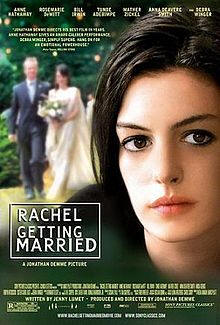

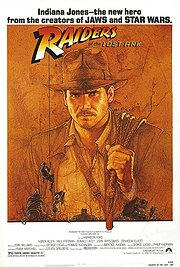
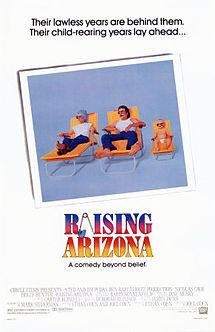

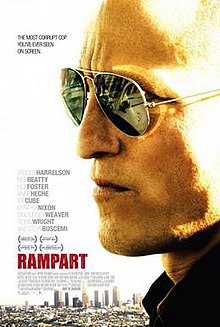
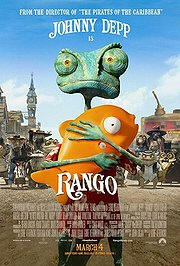



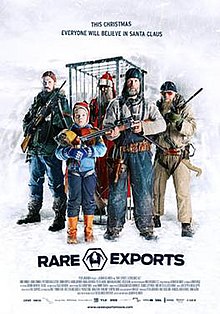
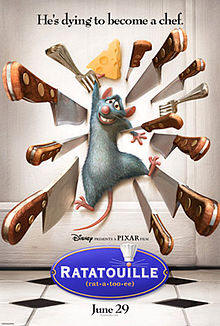
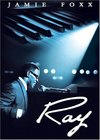
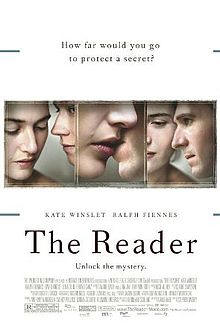




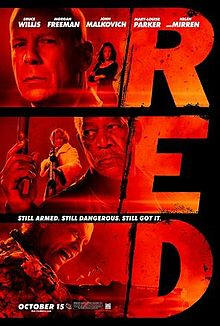

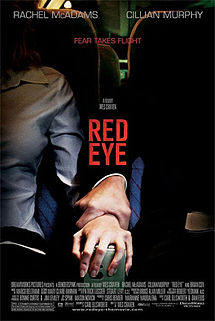
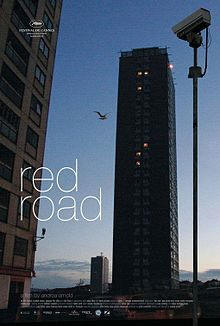
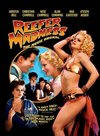
.jpg/220px-The_Red_Shoes_(1948_movie_poster).jpg)

